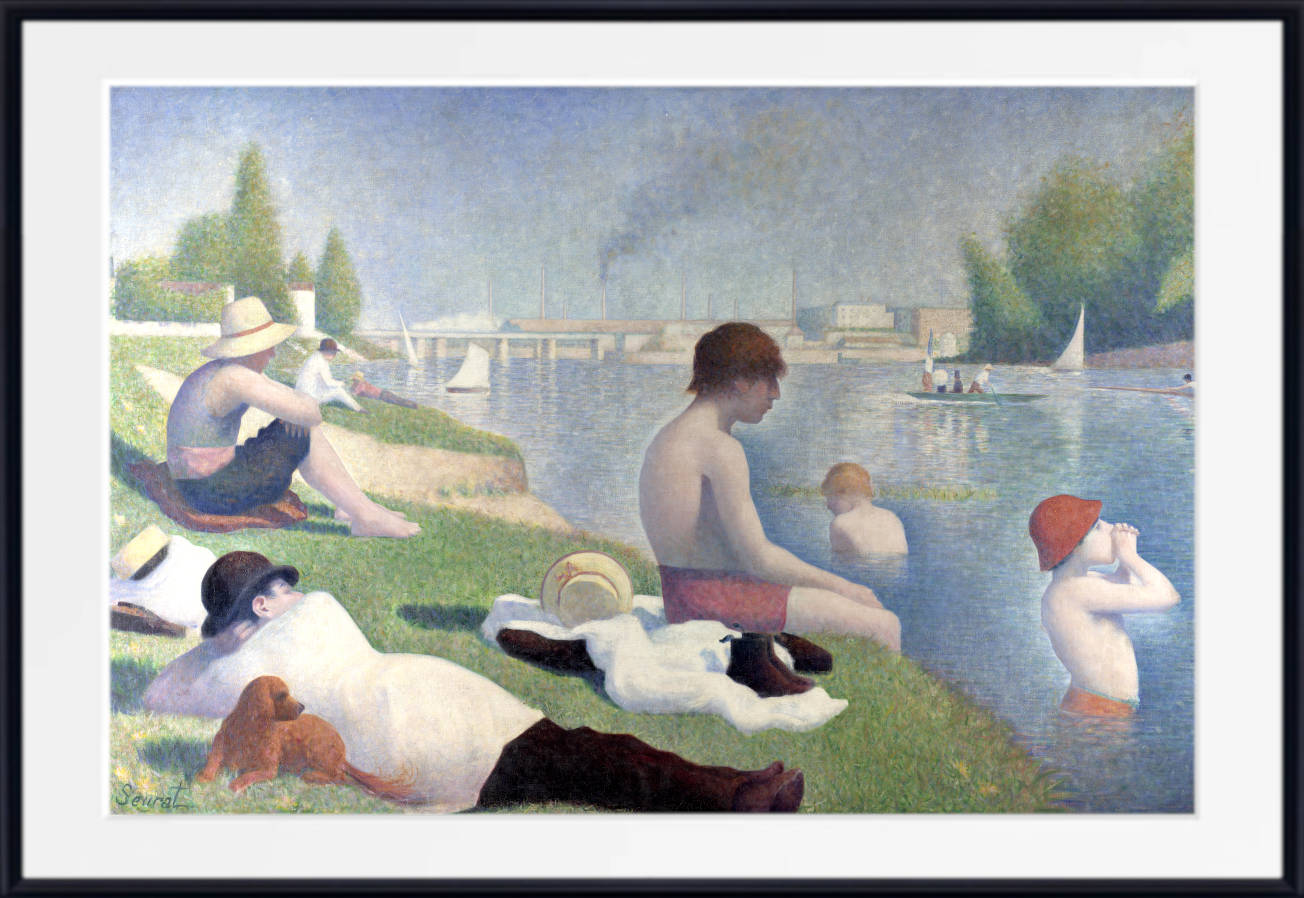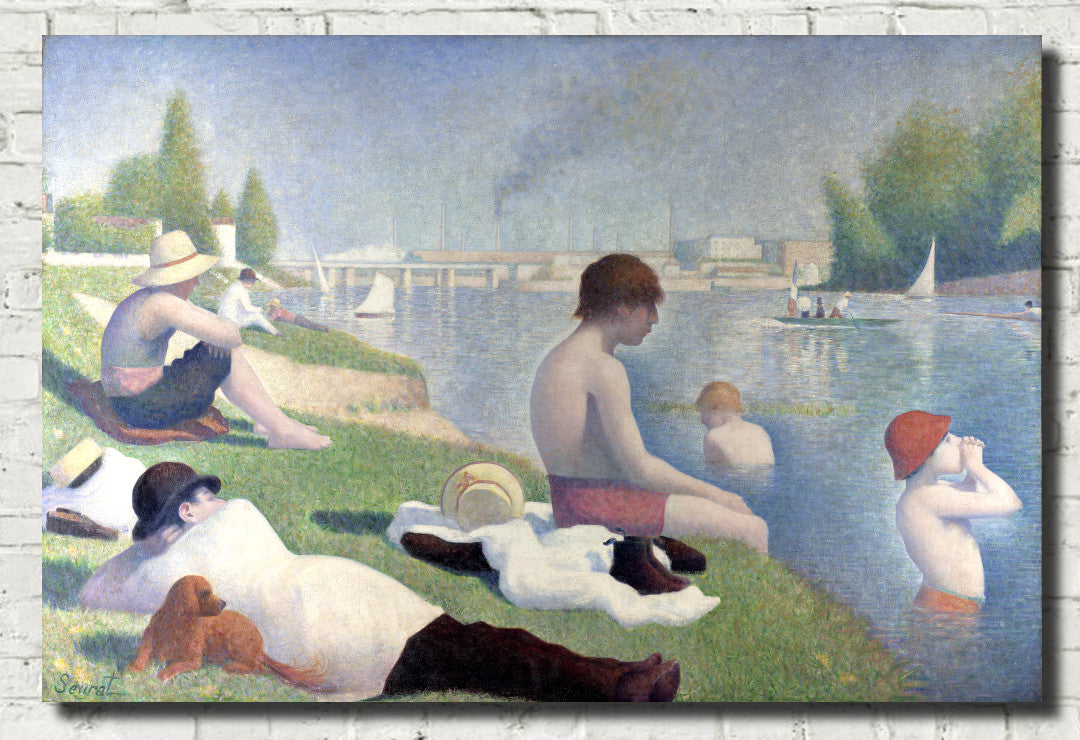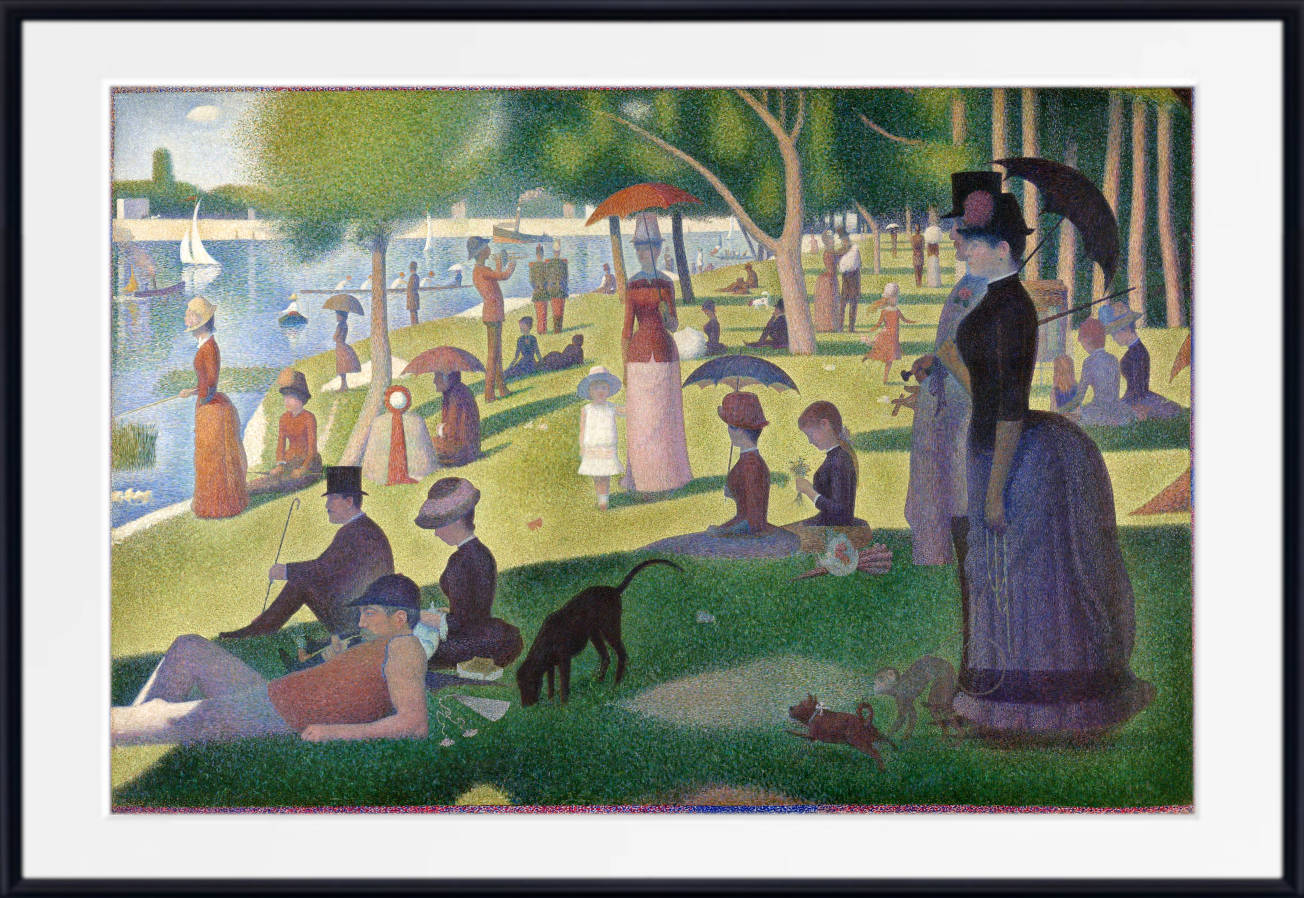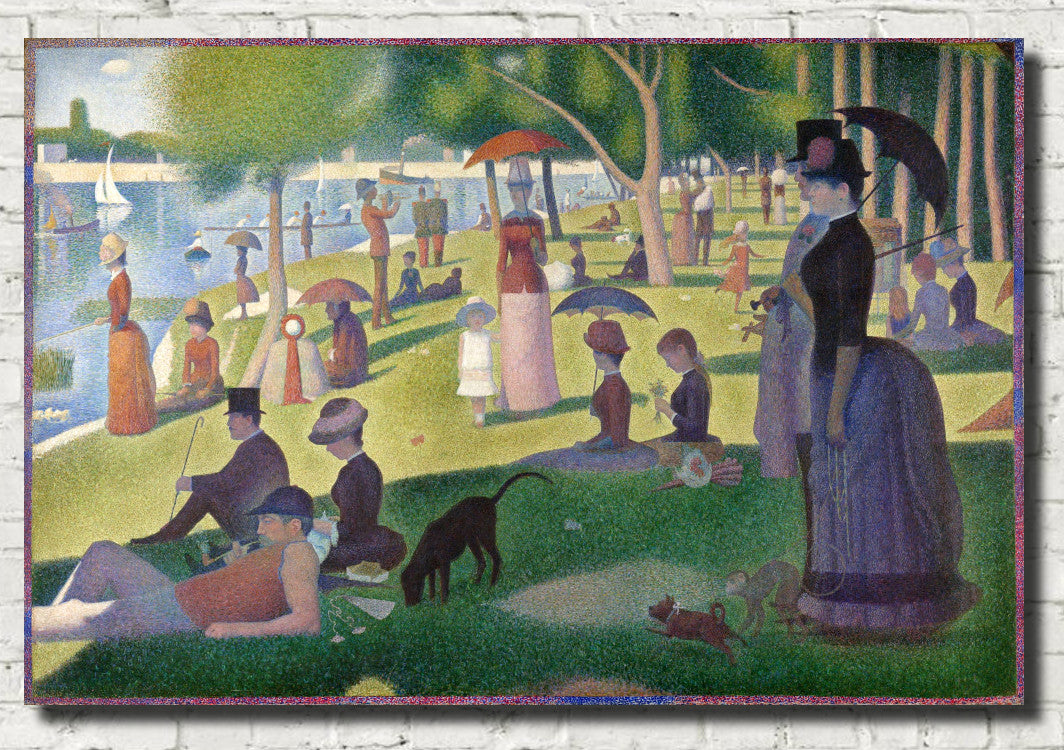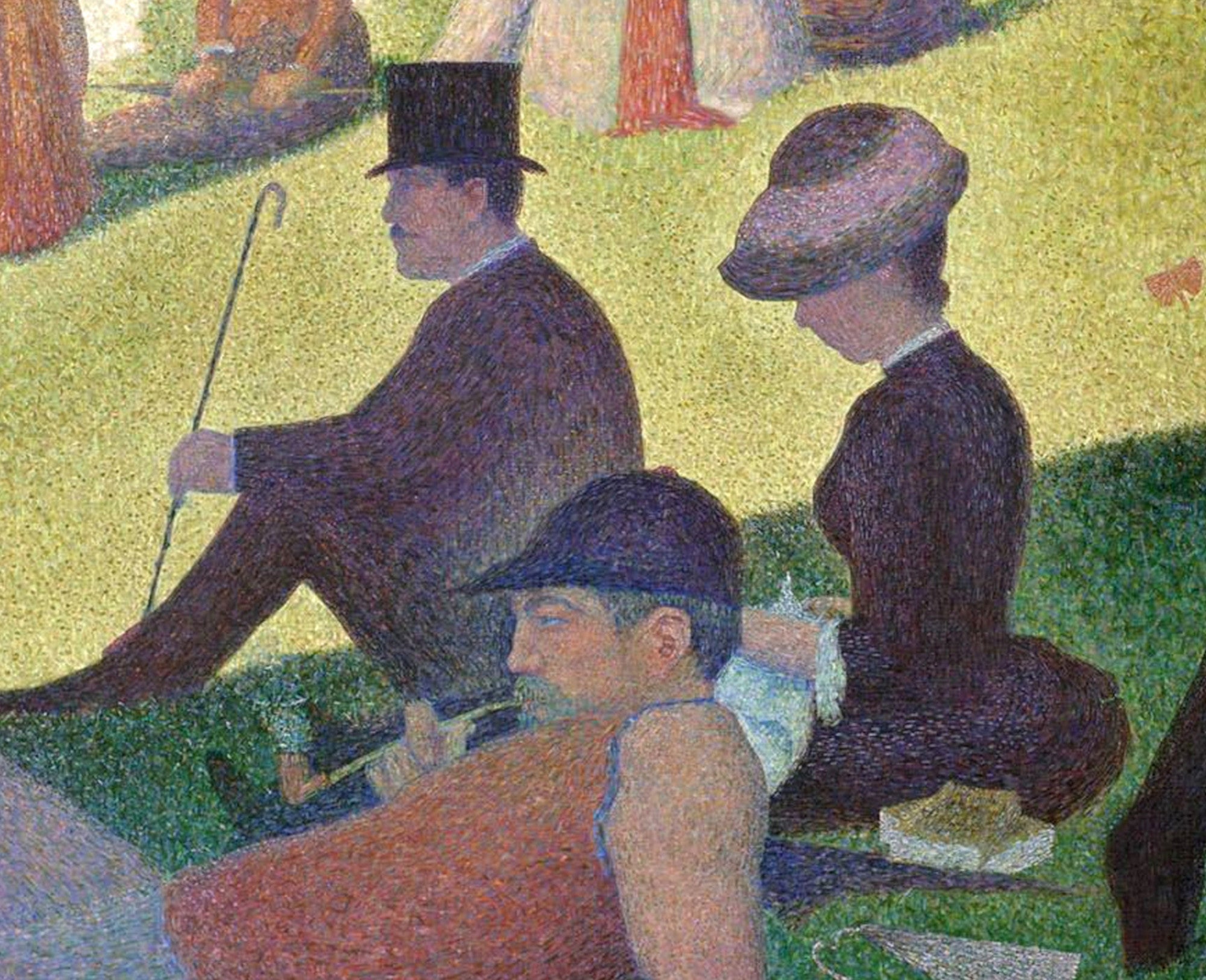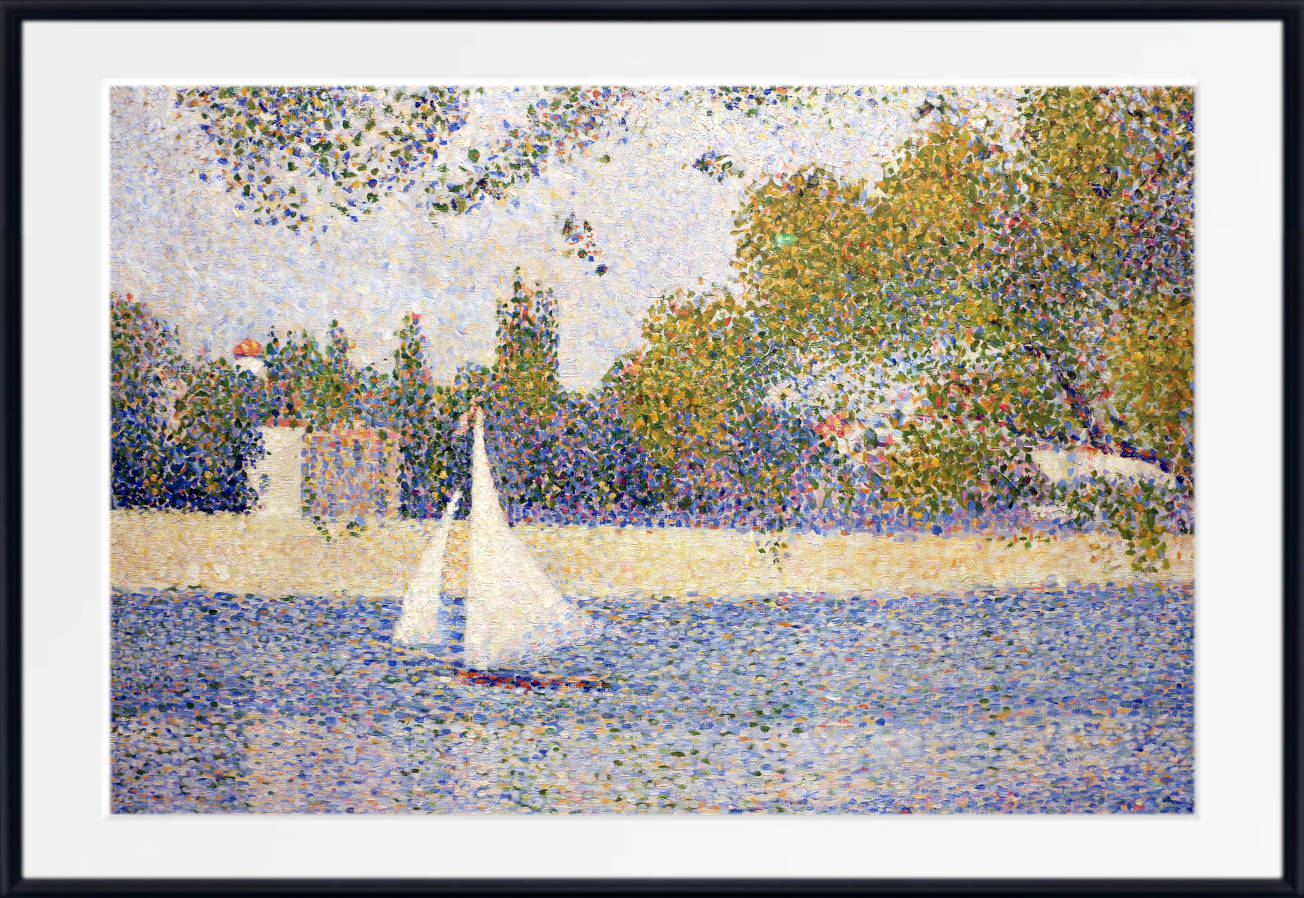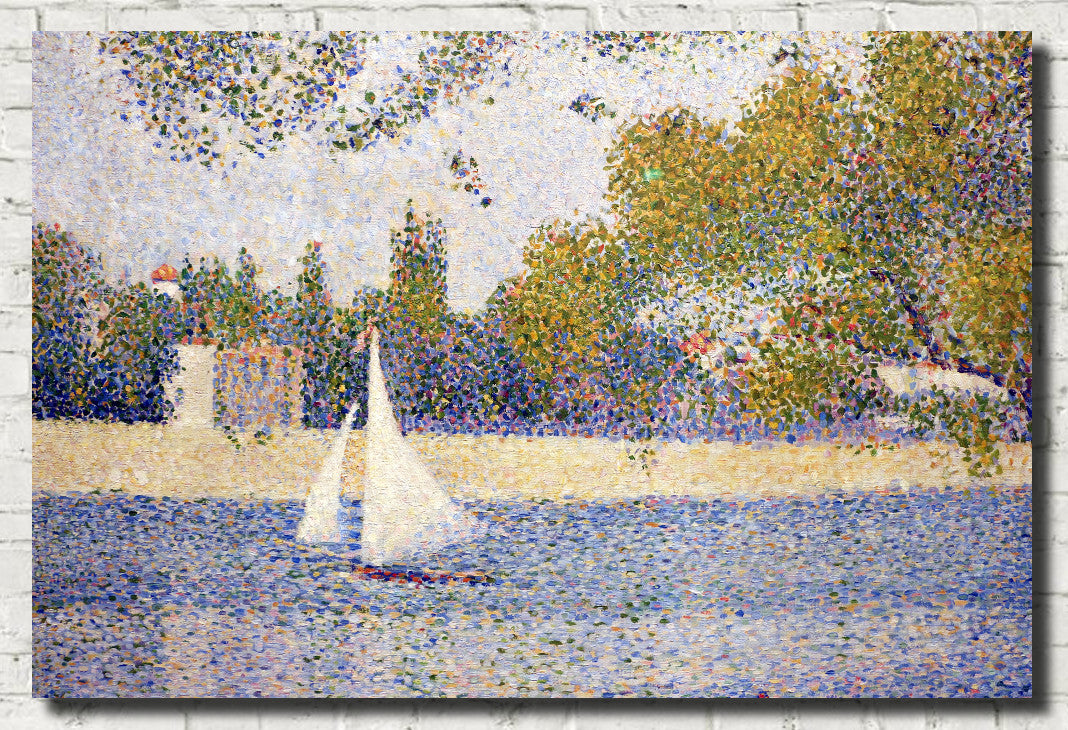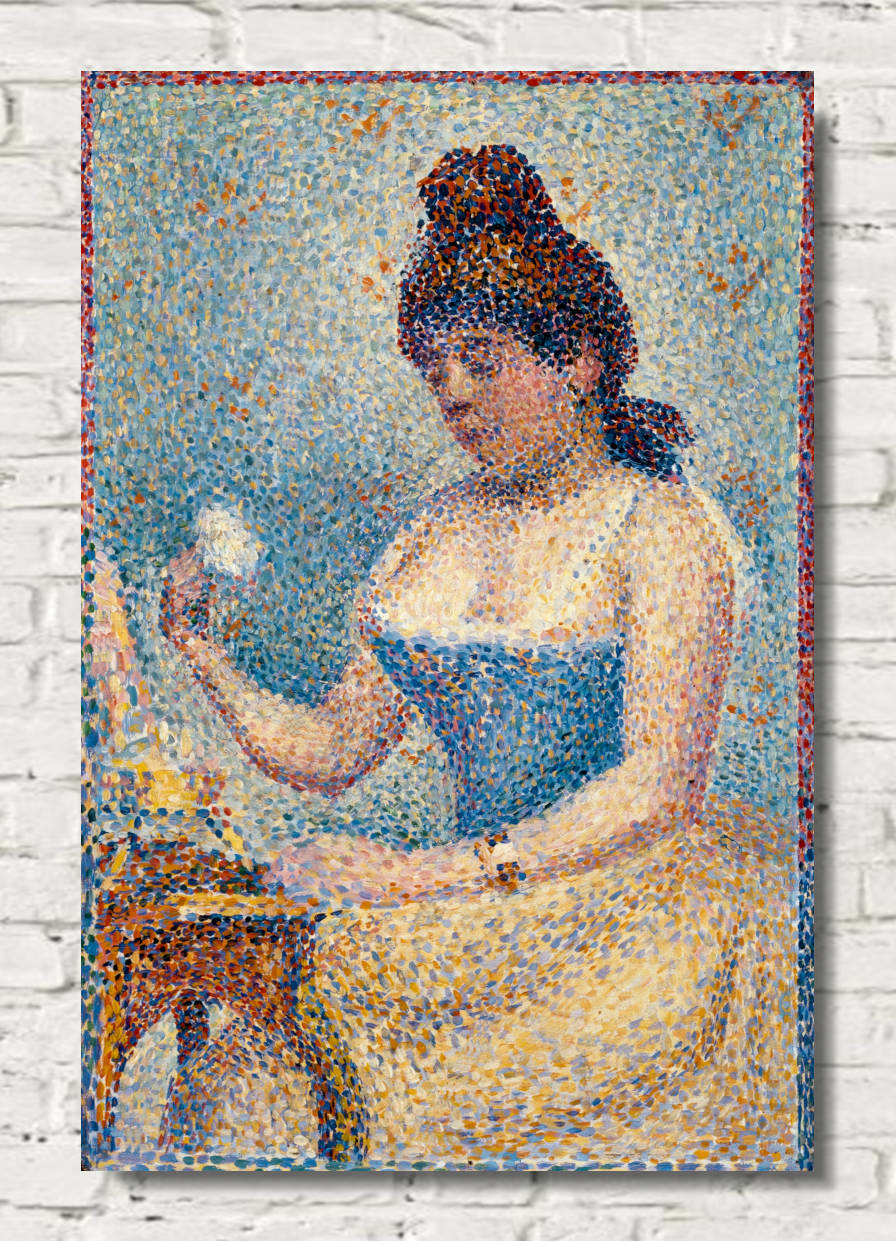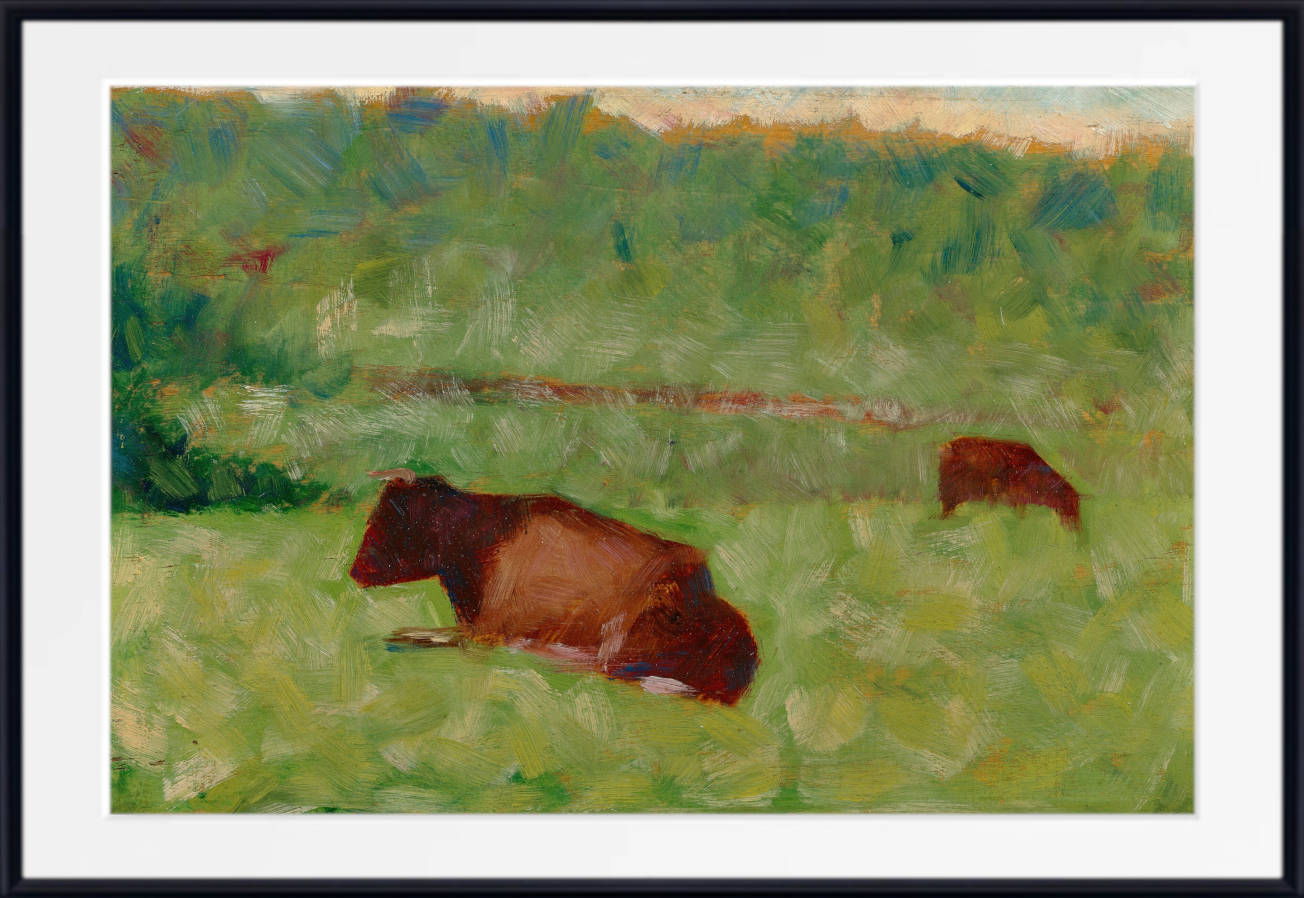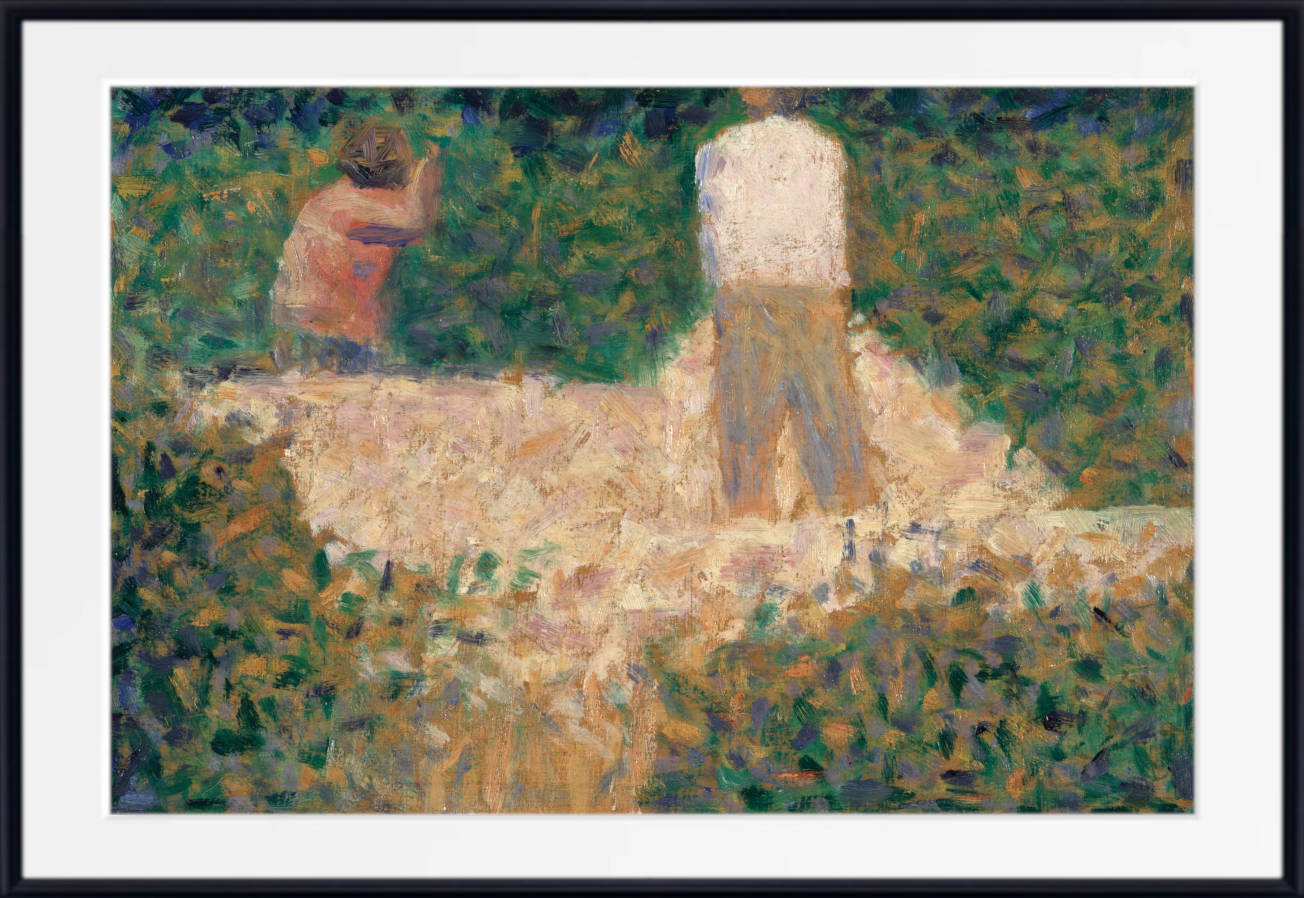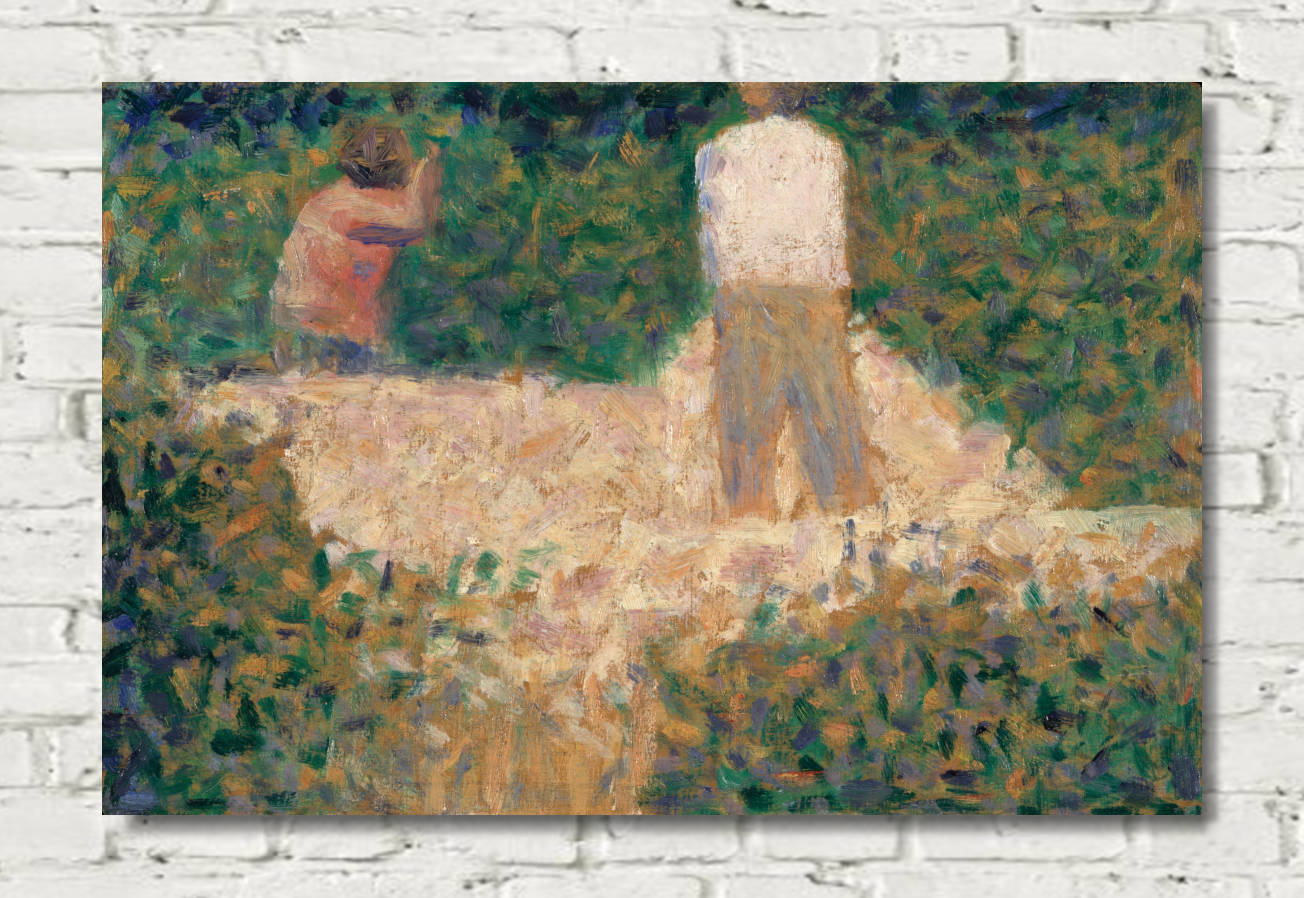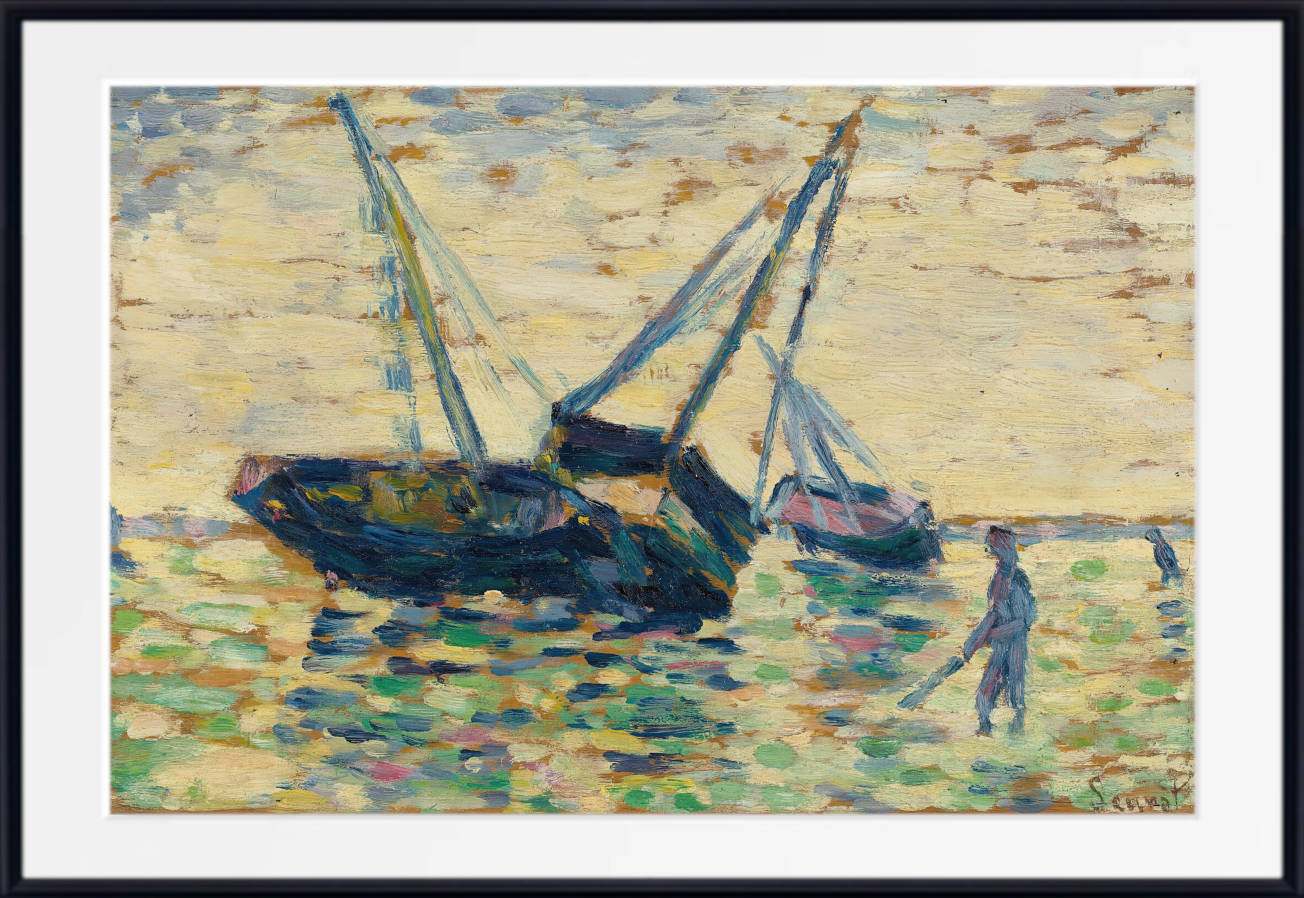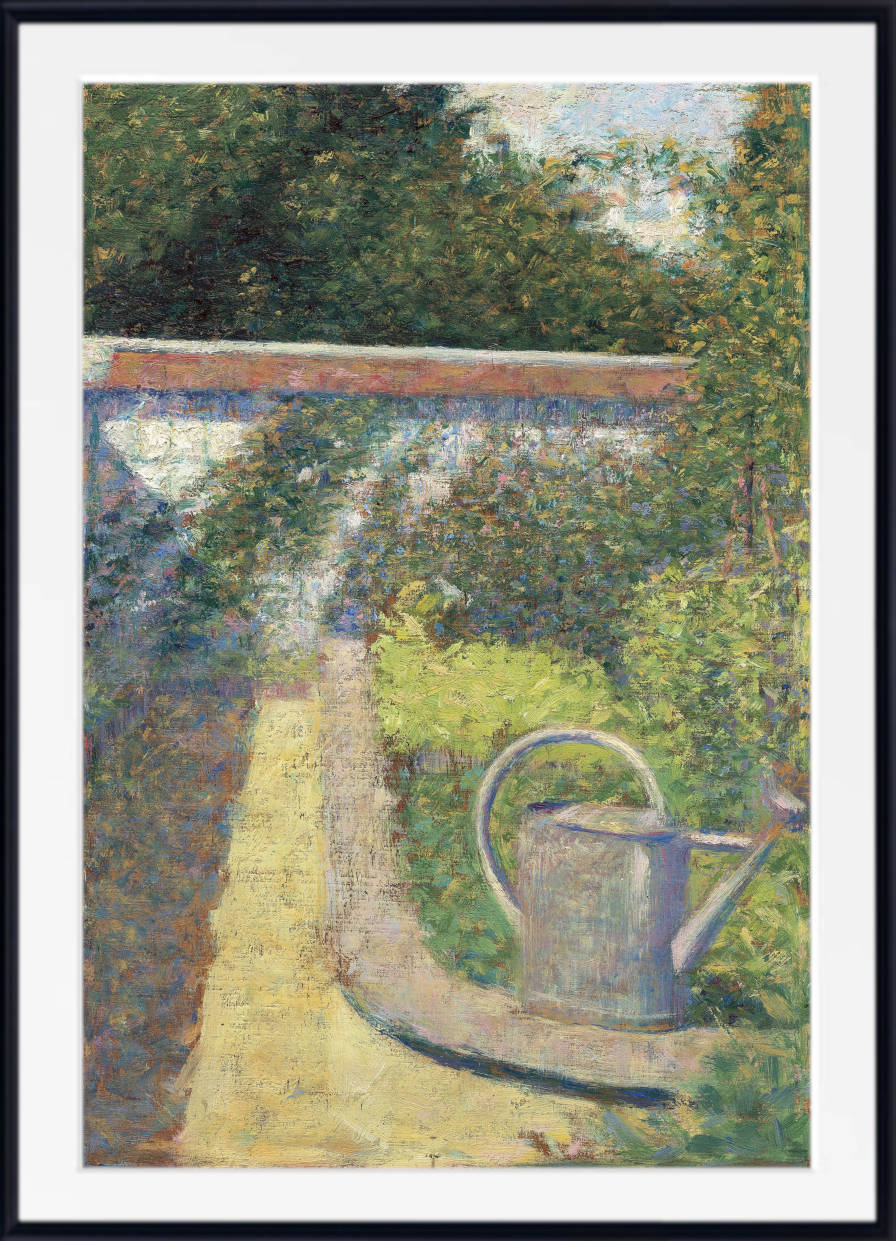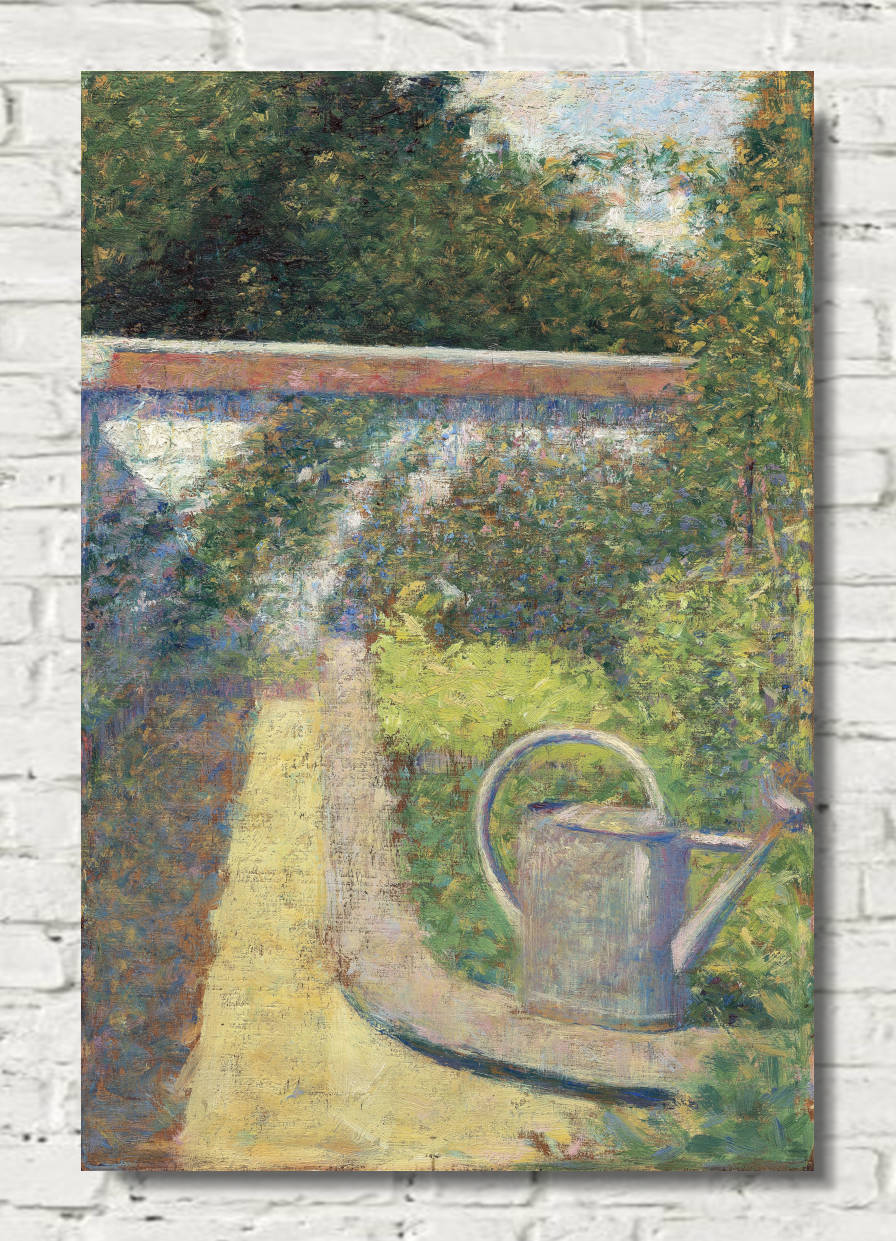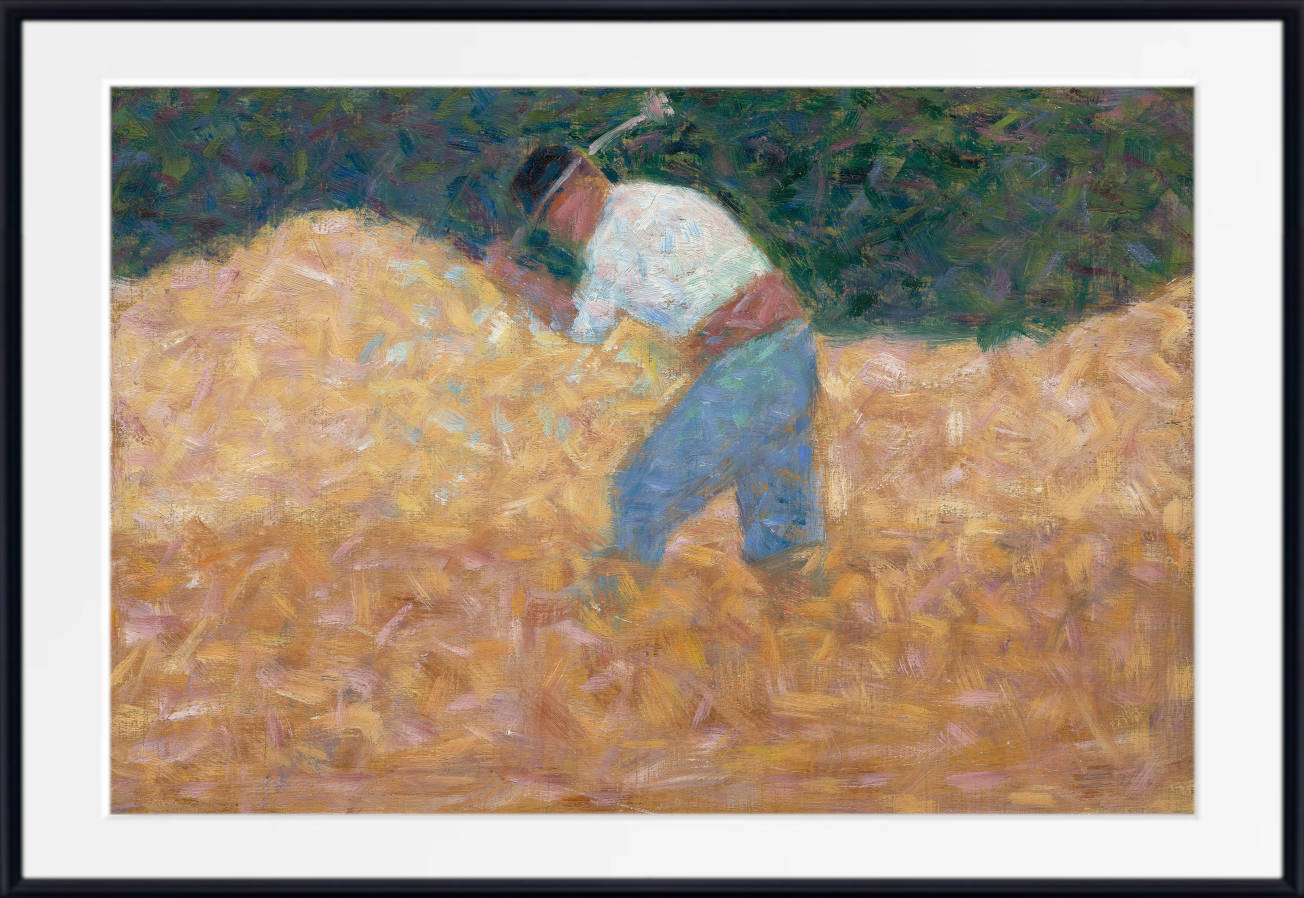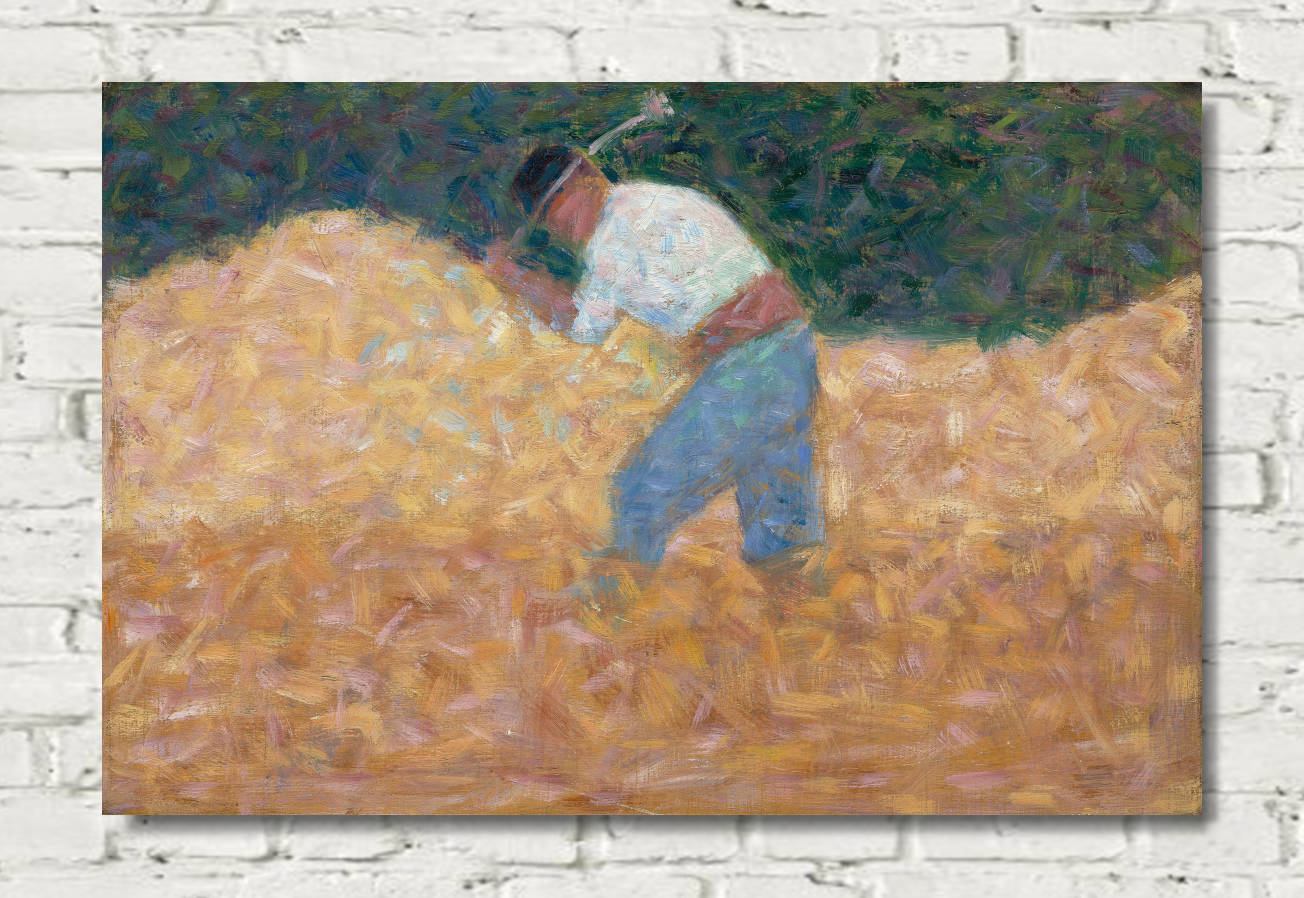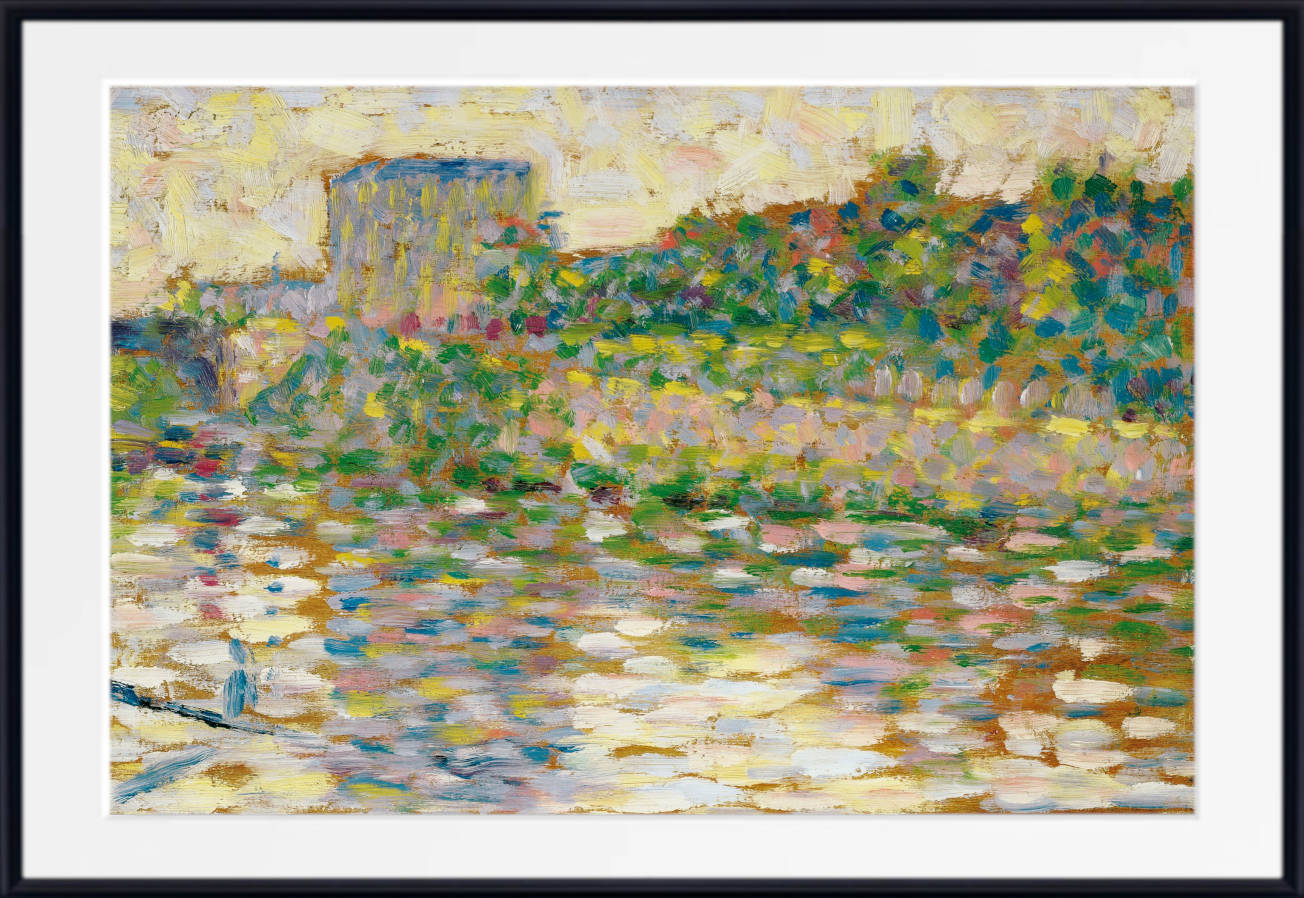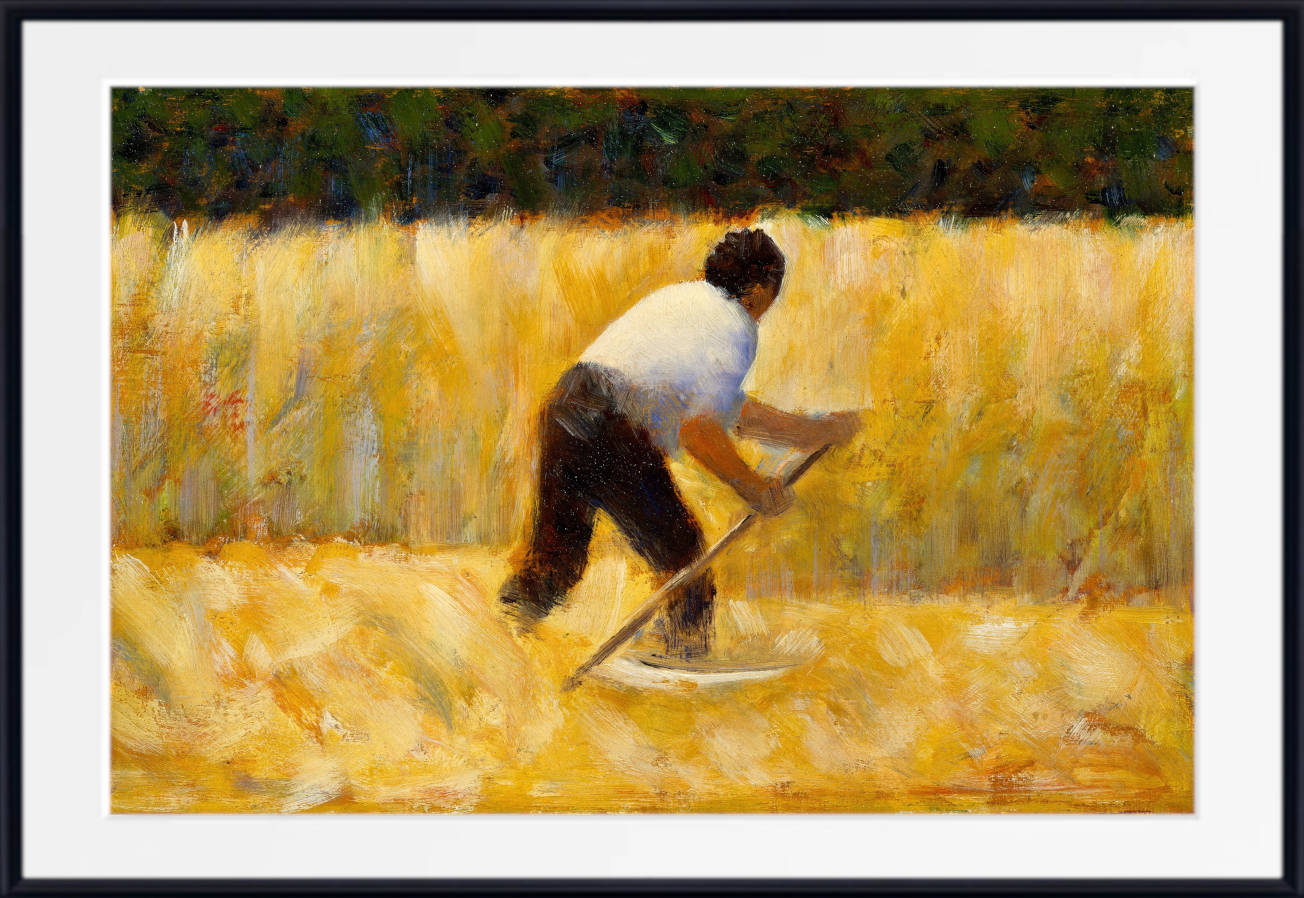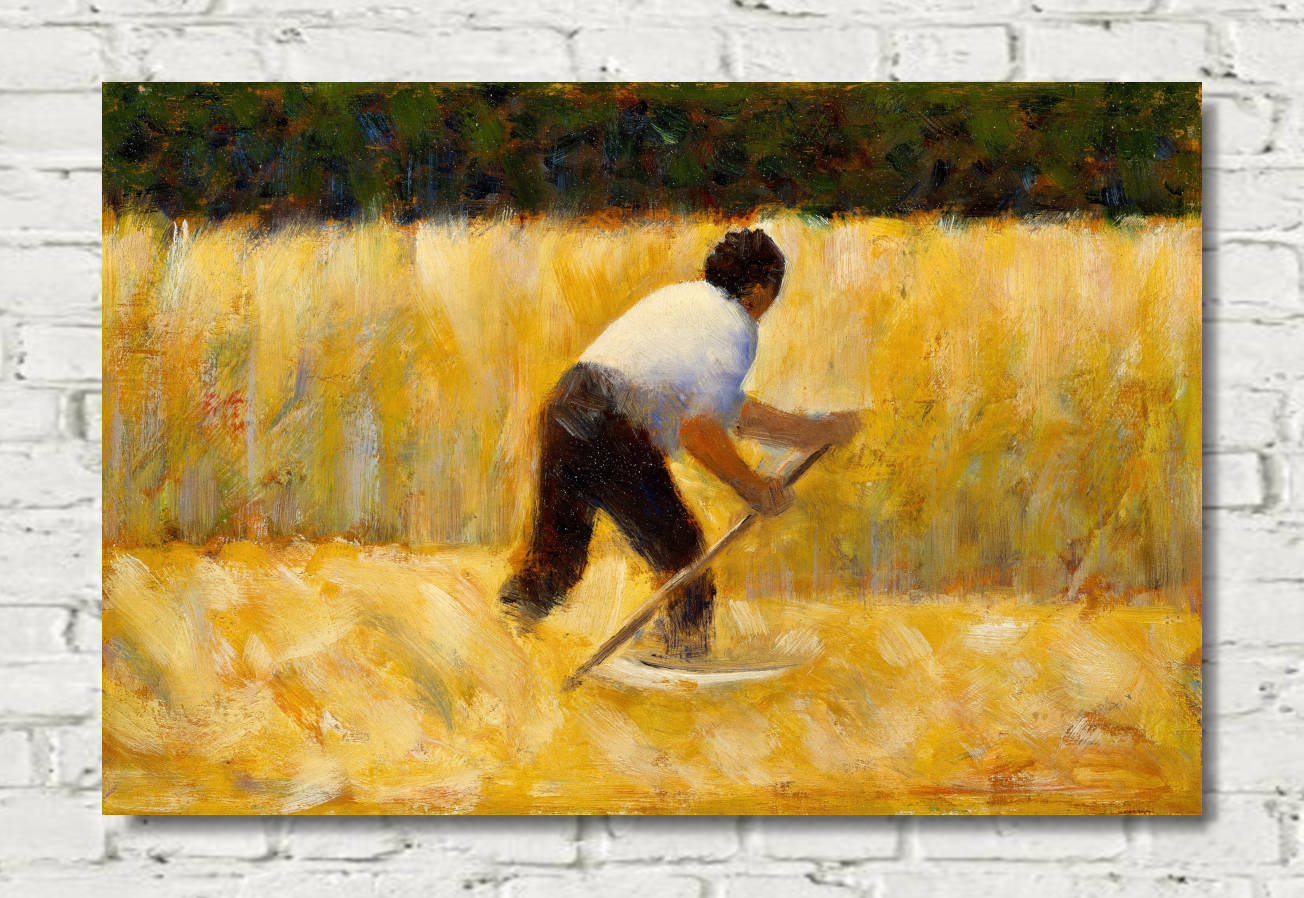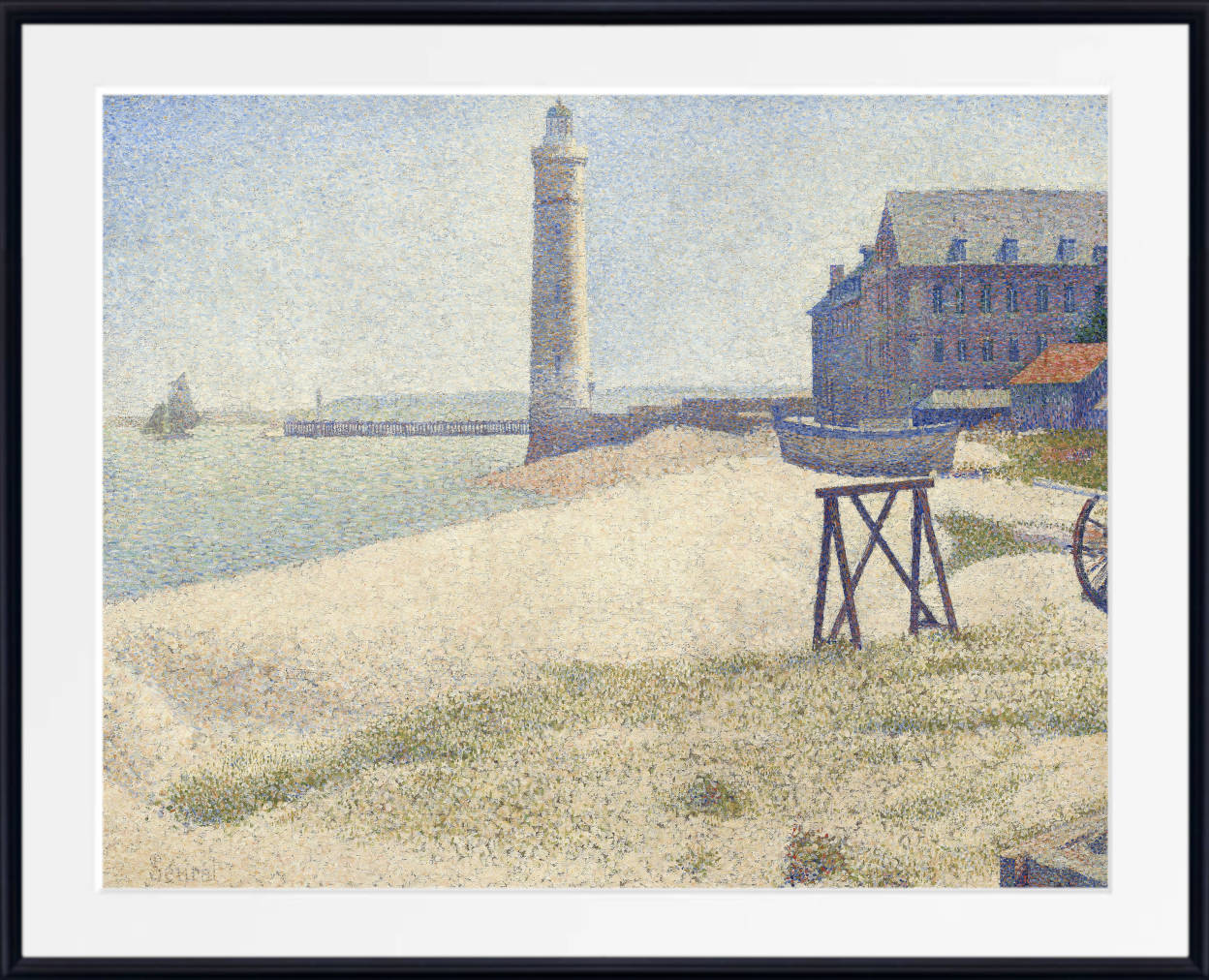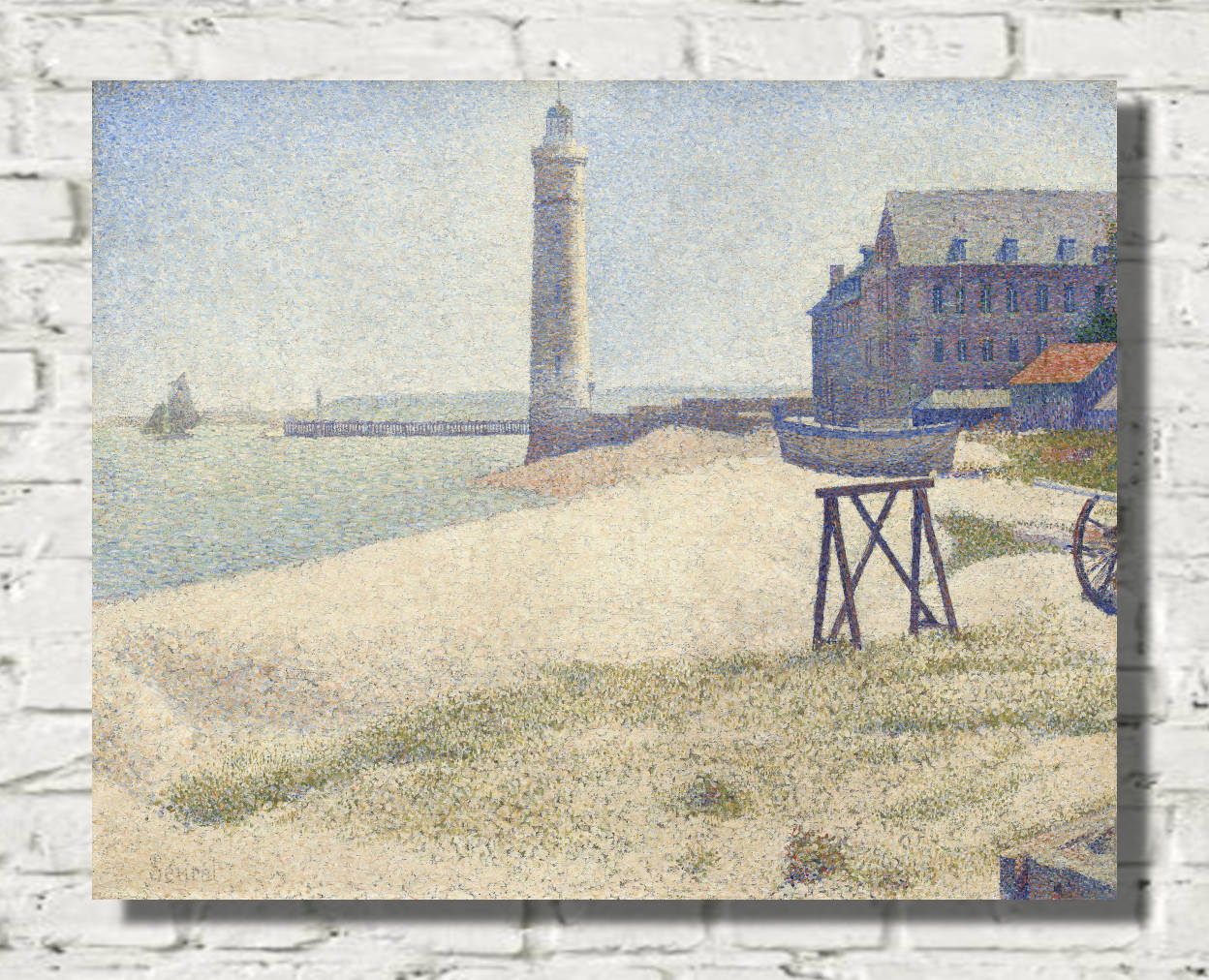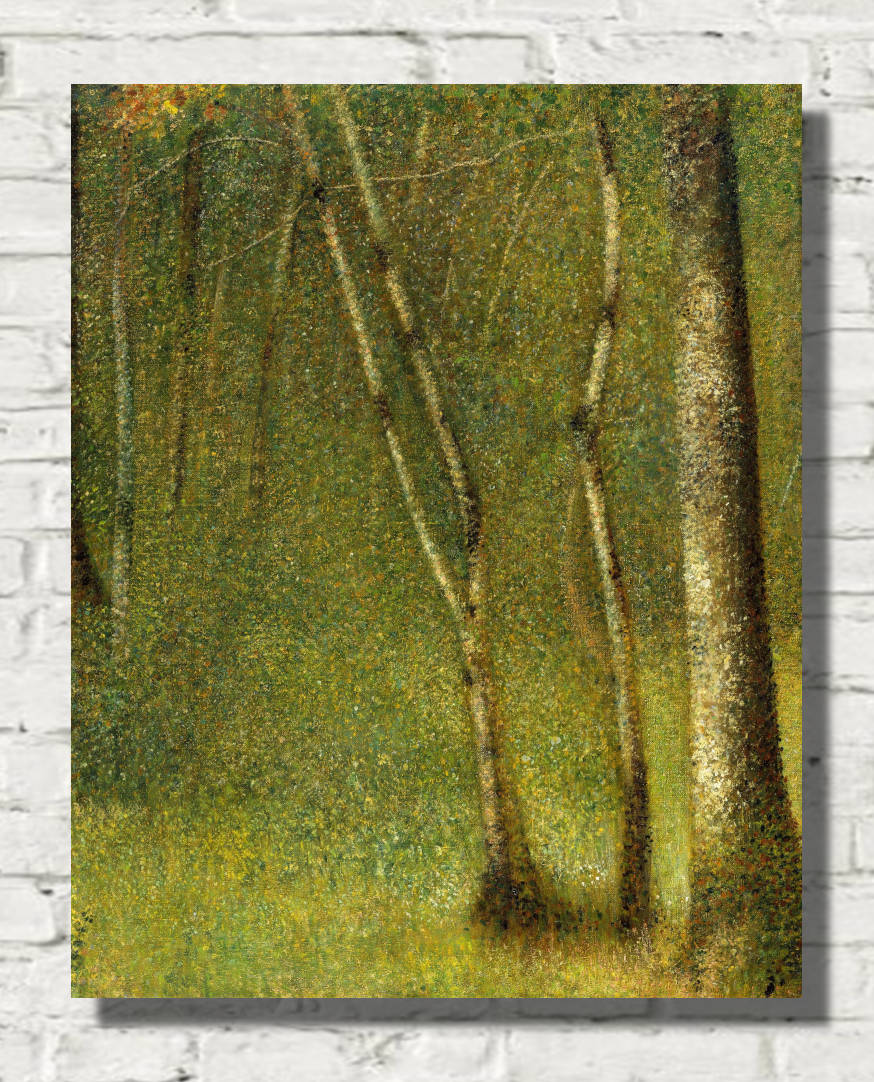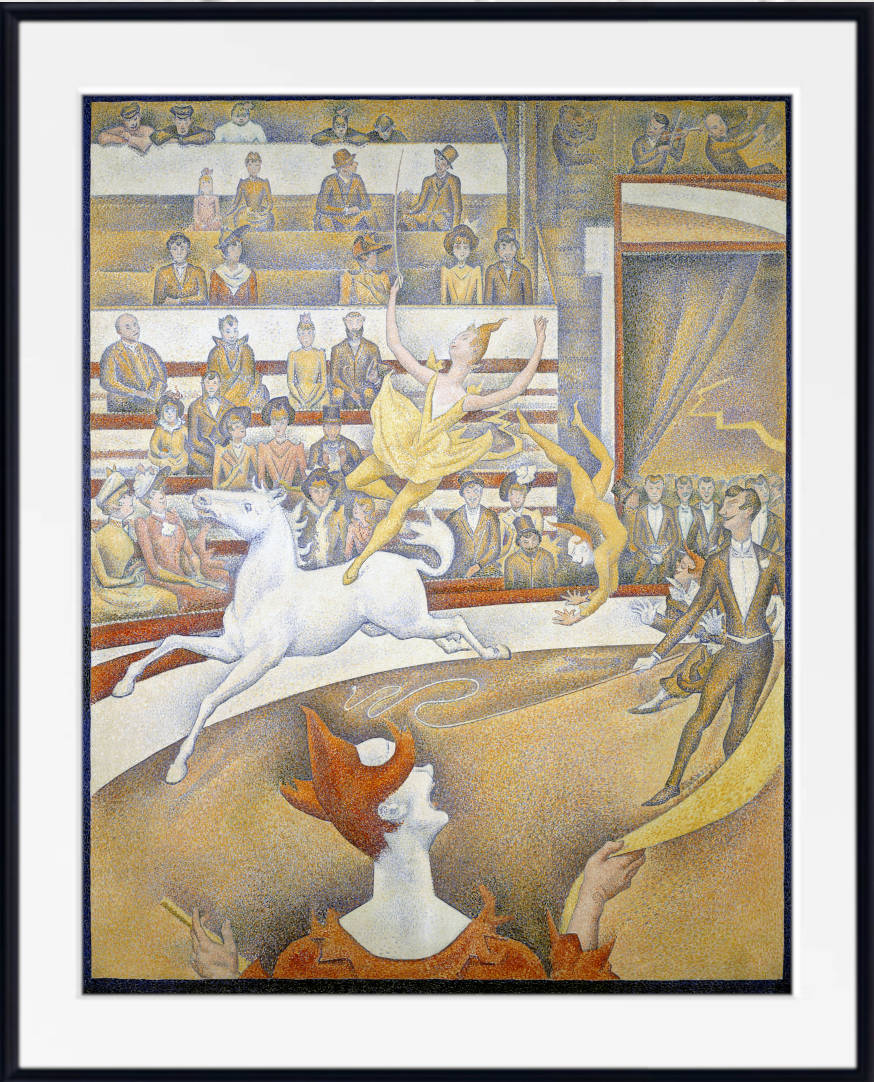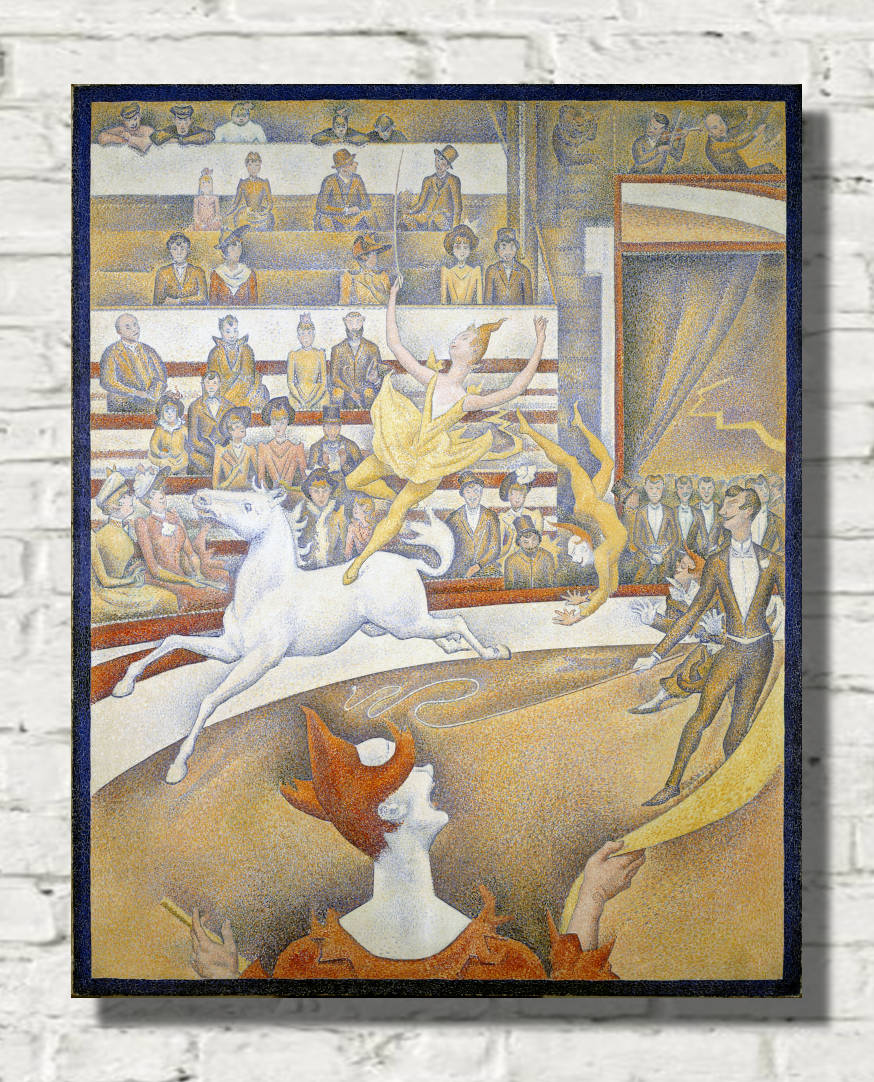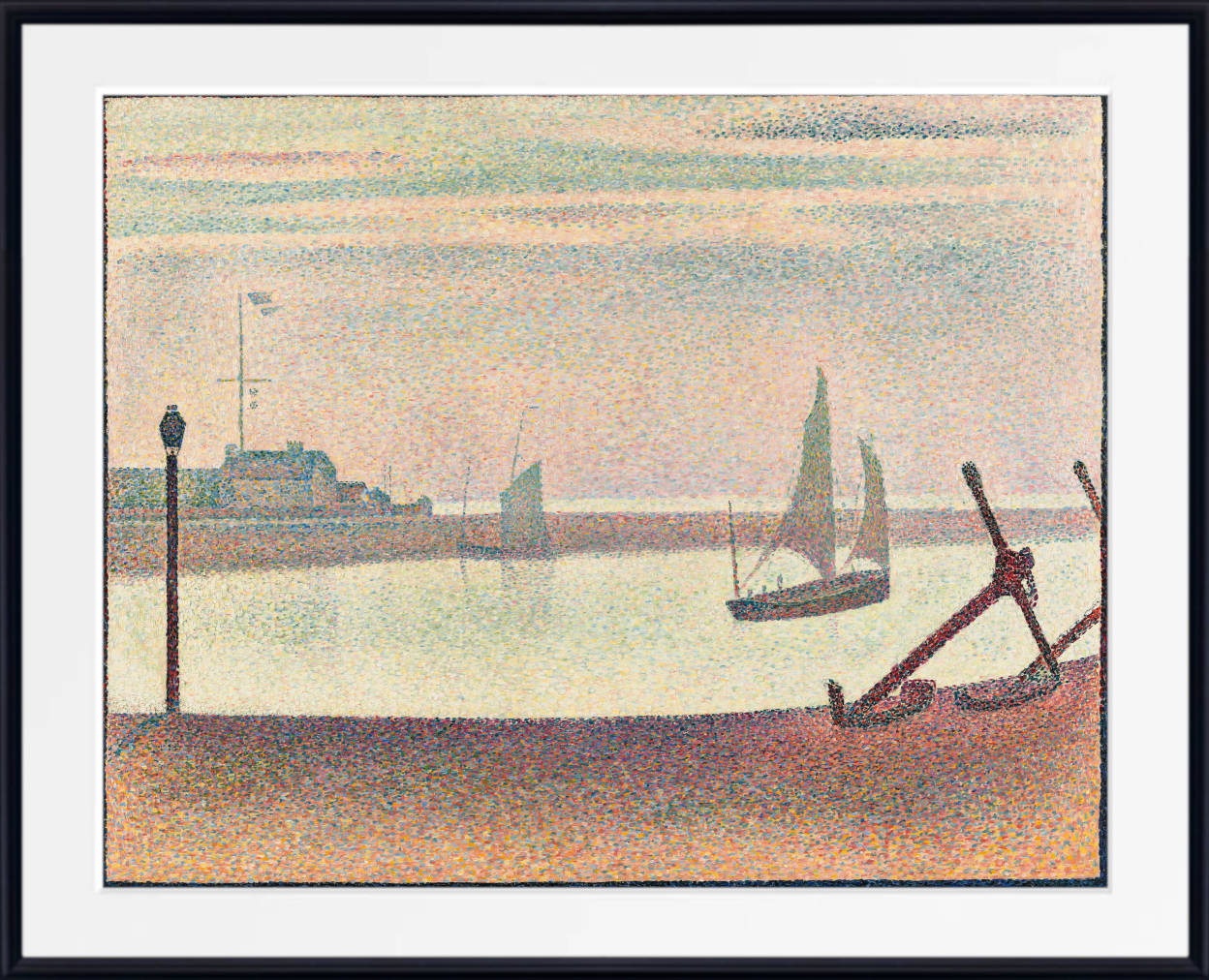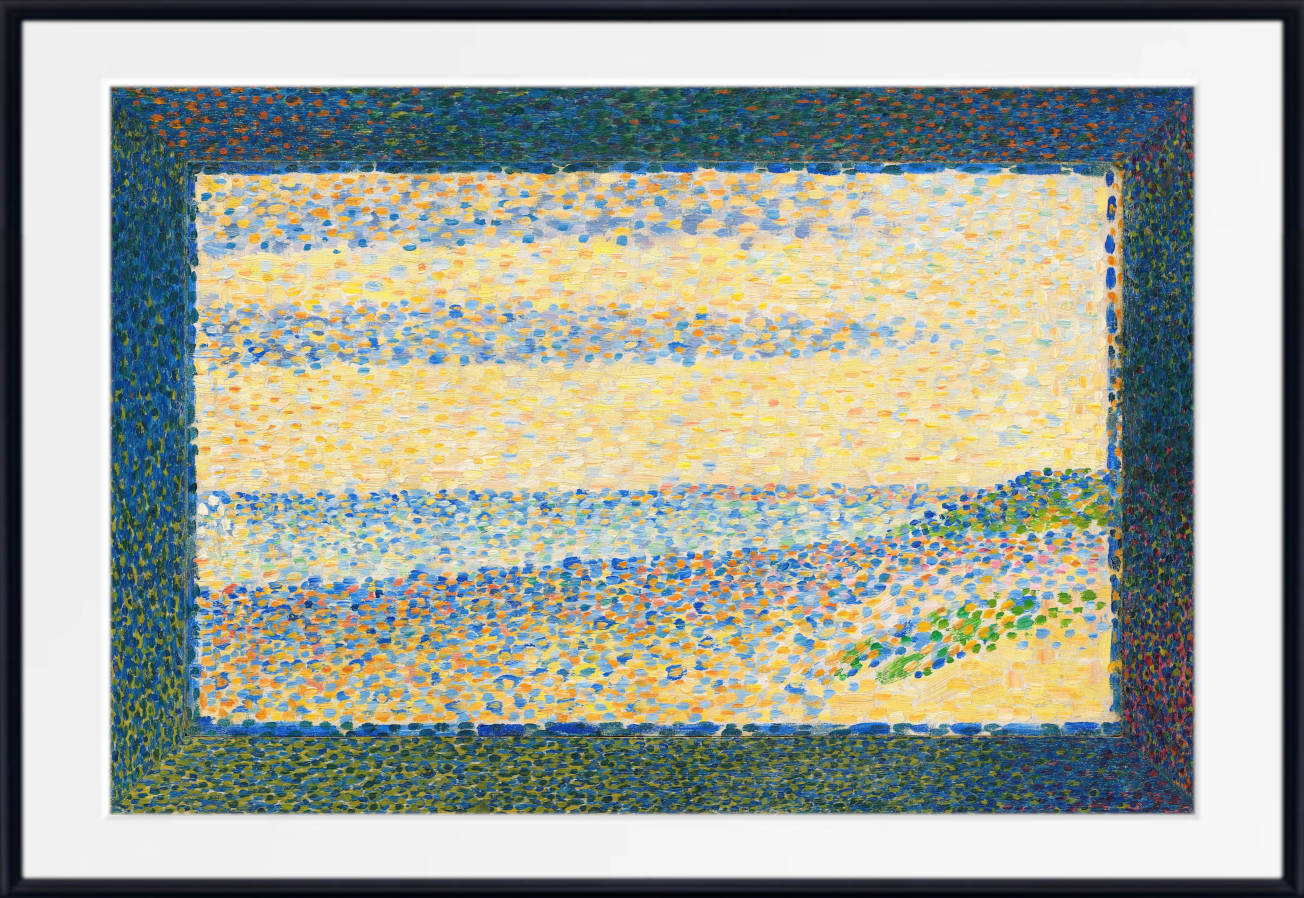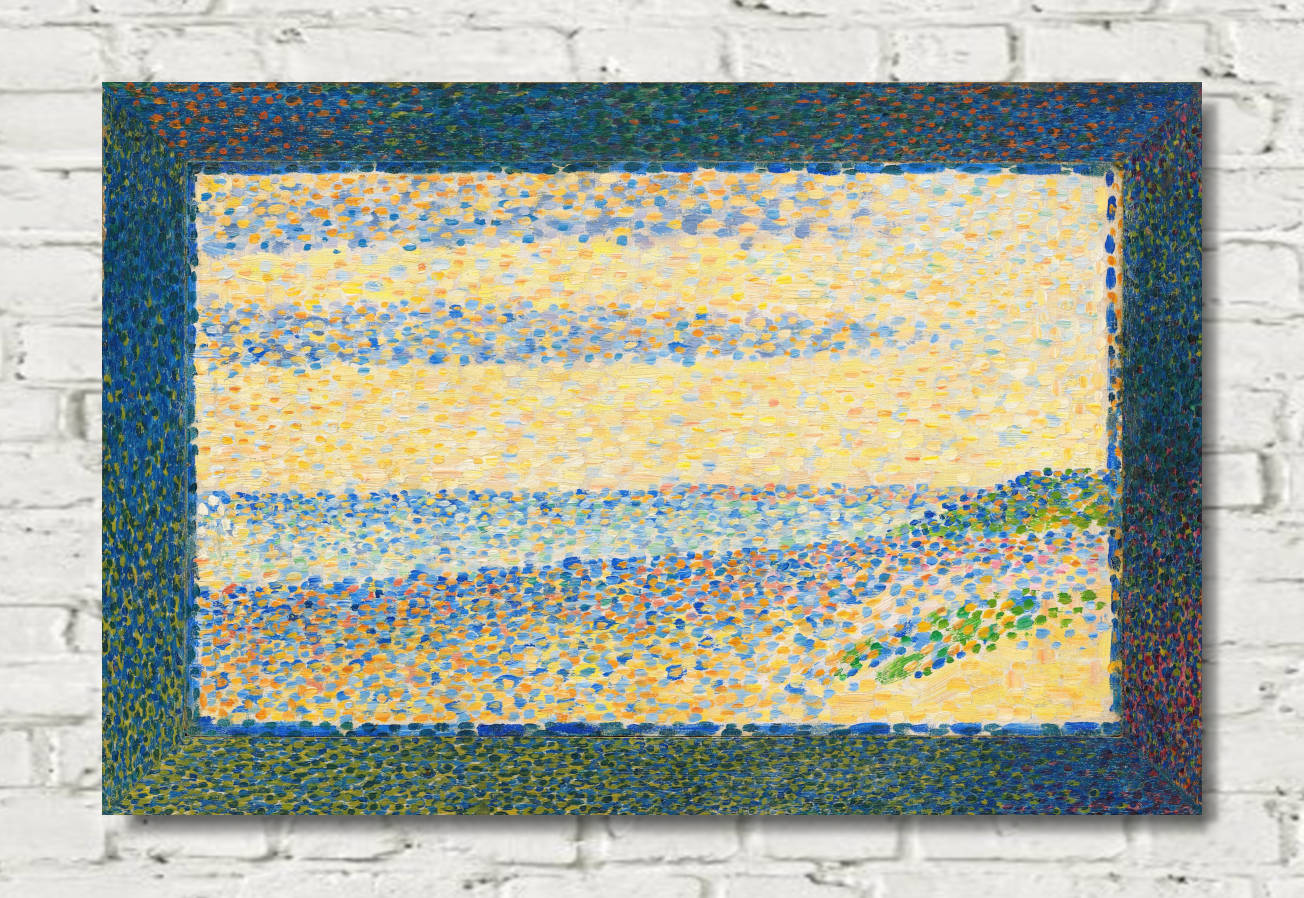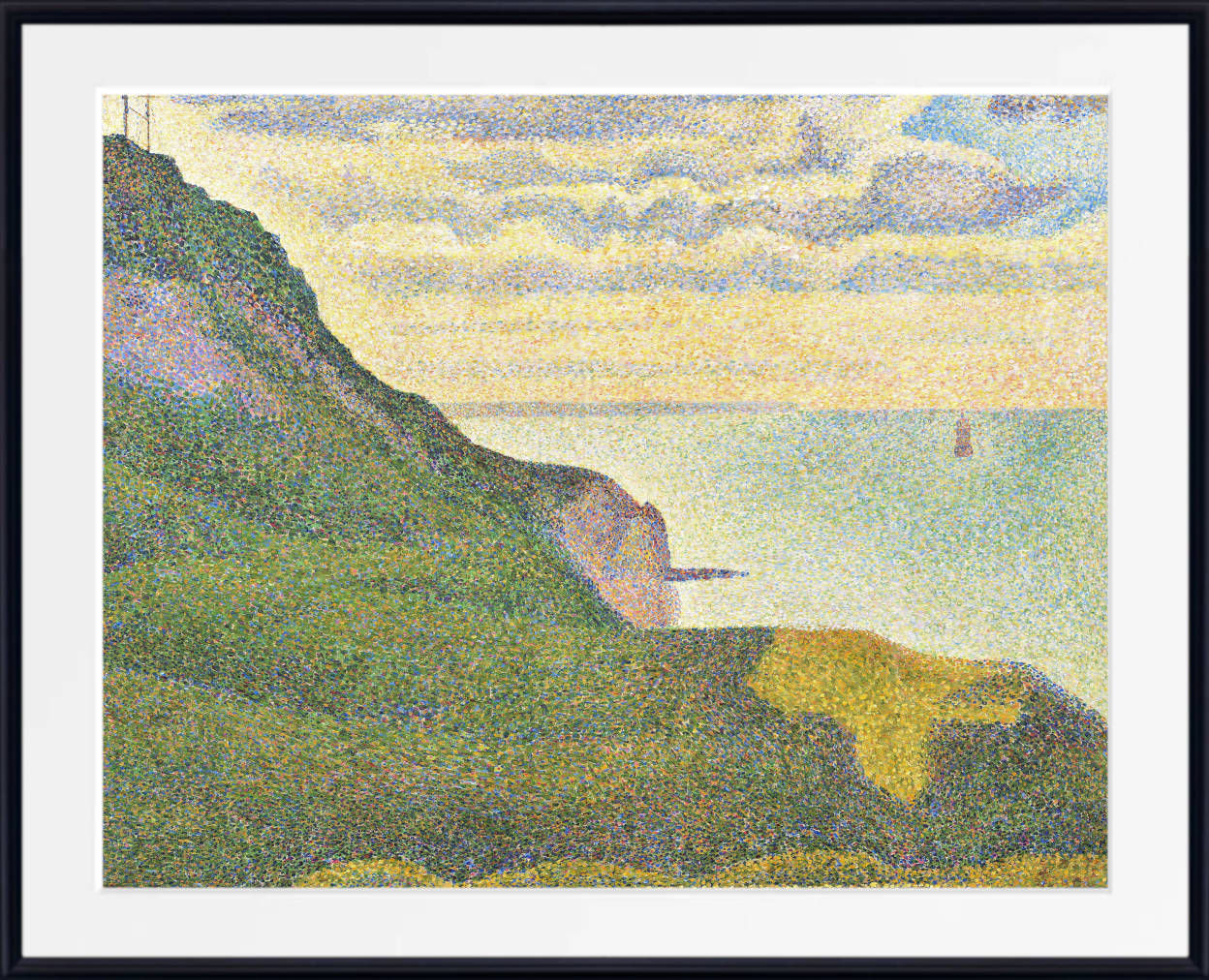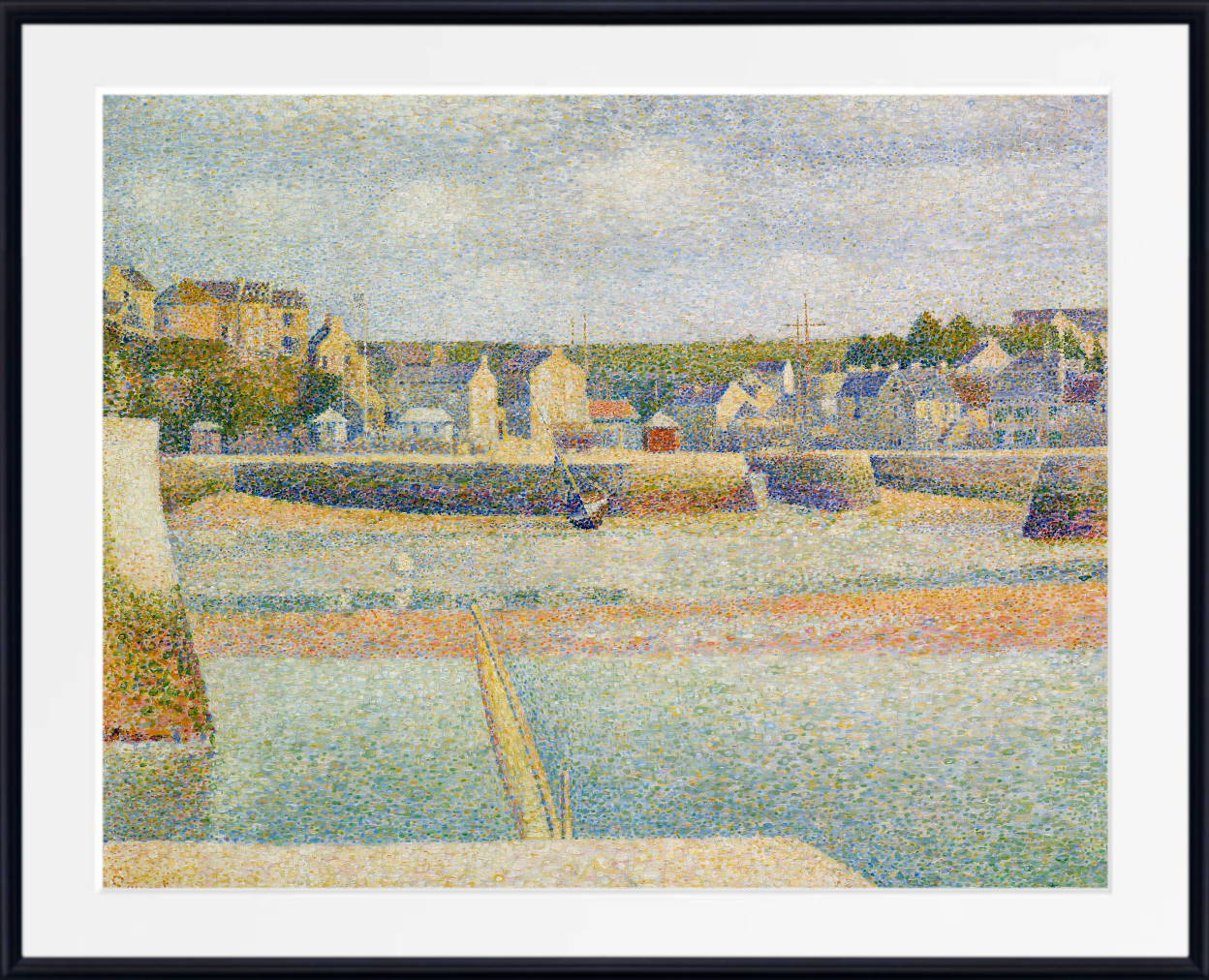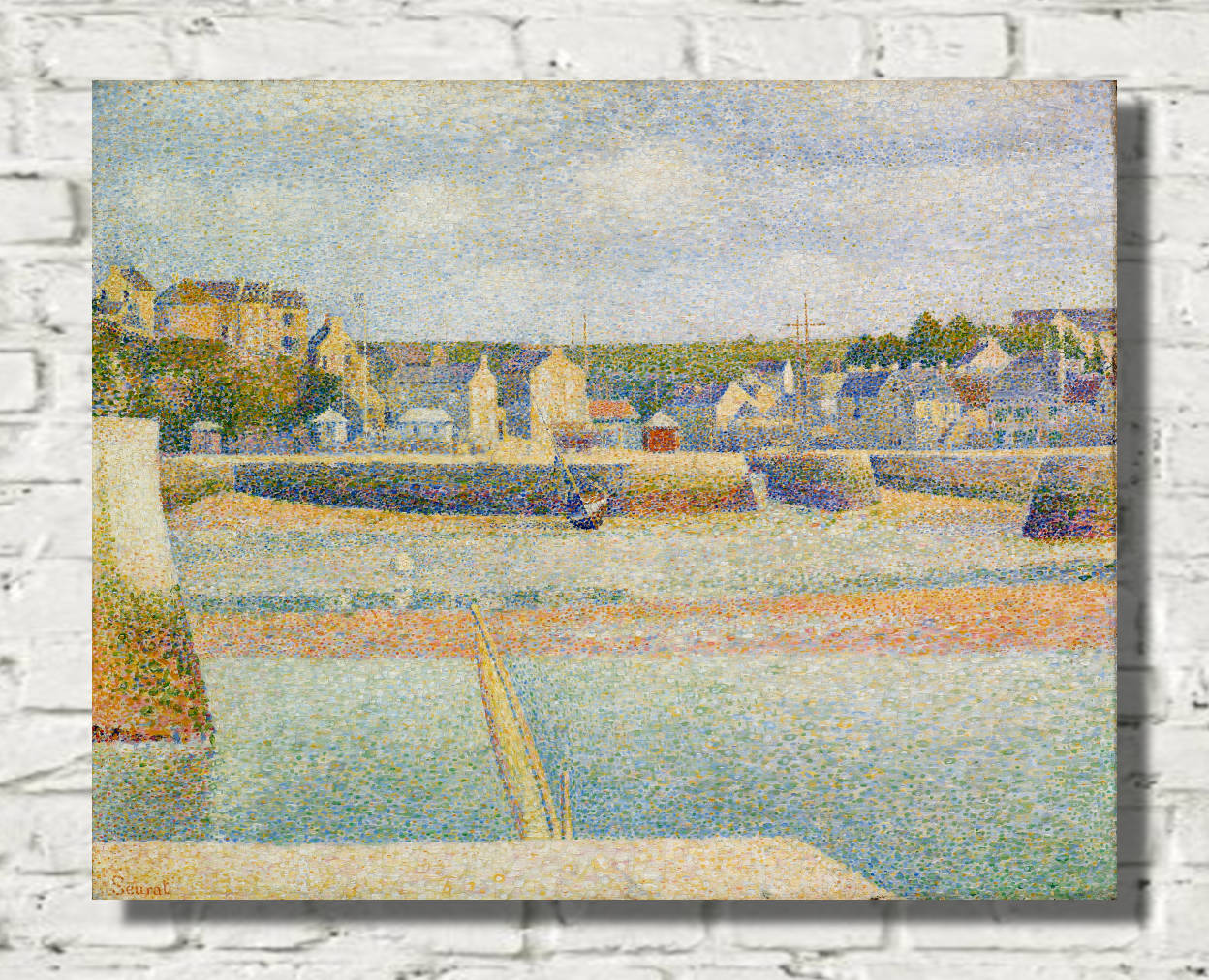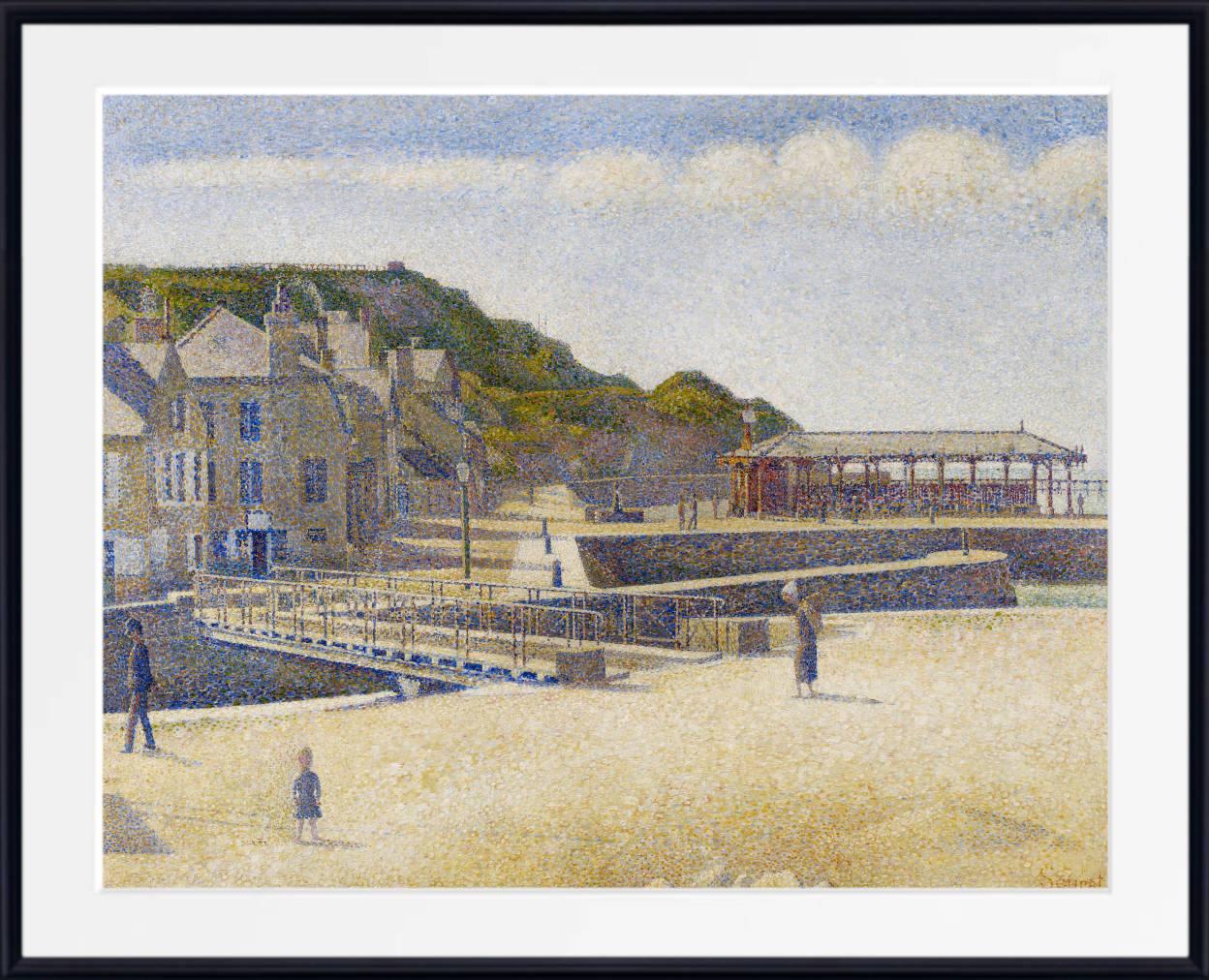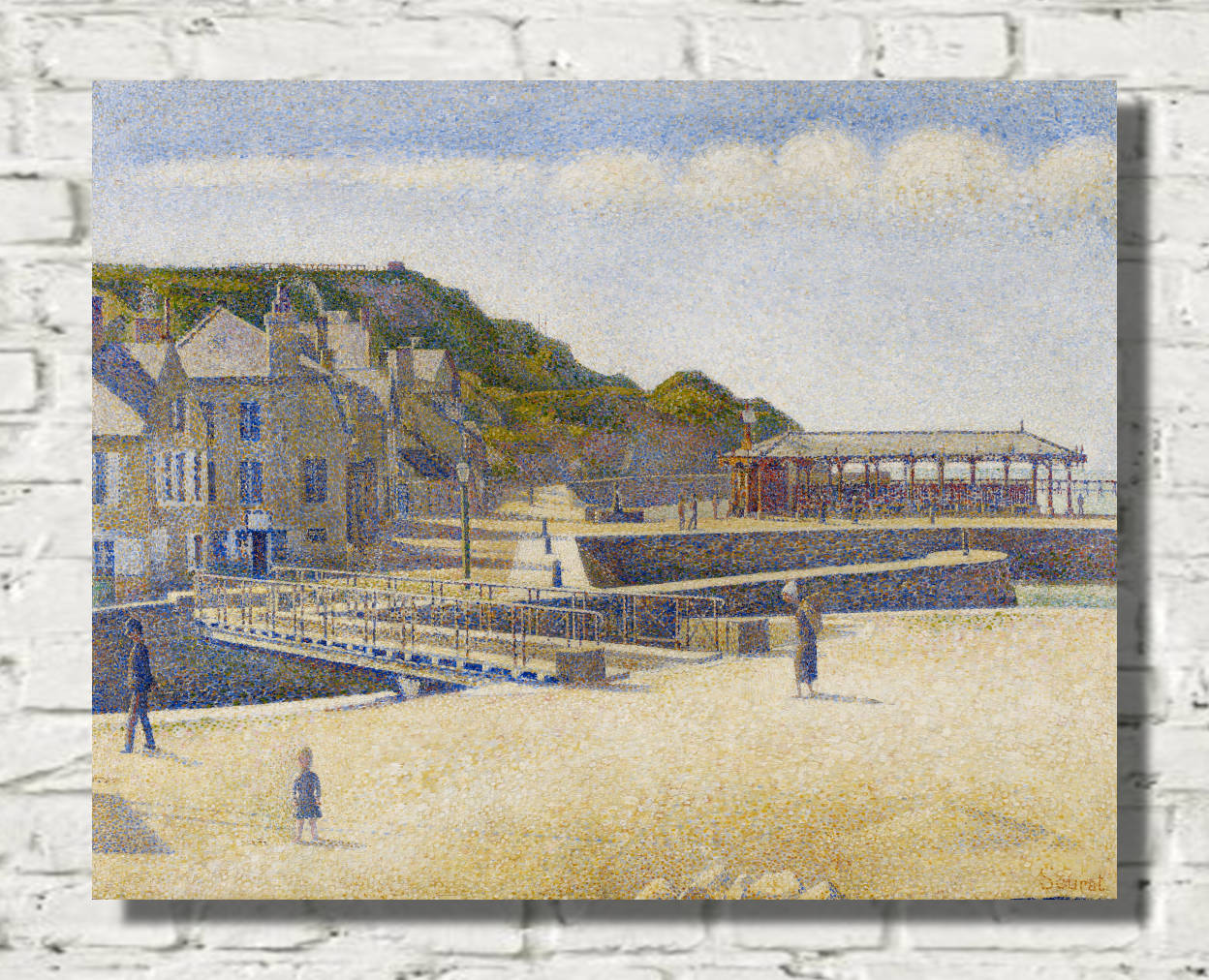Georges Seurat, The Seine seen from La Grande Jatte (1888)
Pointillism is a technique of painting in which small, distinct dots of color are applied in patterns to form an image. Georges Seurat and Paul Signac developed the technique in 1886, branching from Impressionism. The term "Pointillism" was coined by art critics in the late 1880s to ridicule the works of these artists, but is now used without its earlier pejorative connotation. The movement Seurat began with this technique is known as Neo-impressionism. Pointillism in turn is considered to have been an influence on Fauvism. The practice of applying small dots or strokes of colour to a surface has also been referred to as divisionism and chromo-luminarism (just to confuse the lay-person a little further!). Althought these different terms are generally quite synonymous, there are some technical differences. By requiring the viewer to combine the colors optically instead of physically mixing pigments, Divisionists believed they were achieving the maximum luminosity scientifically possible while Pointillism does not necessarily focus on the separation of colors.
Georges Seurat (1859-1891)
Georges Seurat was a French post-Impressionist artist. He is best known for devising the painting techniques known as chromoluminarism as well as pointillism. While less famous than his paintings, his conté crayon drawings have also garnered a great deal of critical appreciation. Seurat's artistic personality combined qualities that are usually supposed to be opposed and incompatible: on the one hand, his extreme and delicate sensibility, on the other, a passion for logical abstraction and an almost mathematical precision of mind. His large-scale work A Sunday Afternoon on the Island of La Grande Jatte (1884–1886) altered the direction of modern art by initiating Neo-impressionism, and is one of the icons of late 19th-century painting.
Parade de cirque represents the sideshow (or parade) of the Circus Corvi at place de la Nation, and was his first depiction of a nocturnal scene, and first painting of popular entertainment. Seurat worked on the theme for nearly six years before completing the final painting. Art historian Alfred H. Barr Jr. described Parade de cirque as one of Seurat's most important paintings, its 'formality' and 'symmetry' as highly innovative, and placed it as "the most geometric in design as well as the most mysterious in sentiment" of Seurat's major canvases.
Paul Signac (1863-1935)
Paul Signac was a French Neo-Impressionist painter who, working with Georges Seurat, helped develop the Pointillist style. Paul Signac was born in Paris on 11 November 1863. He followed a course of training in architecture before, at the age of 18, deciding to pursue a career as a painter, after attending an exhibit of Monet's work. He sailed on the Mediterranean Sea, visiting the coasts of Europe and painting the landscapes he encountered. In later years, he also painted a series of watercolors of French harbor cities.
Signac loved sailing and began to travel in 1892, sailing a small boat to almost all the ports of France, to Holland, and around the Mediterranean as far as Constantinople, basing his boat at St. Tropez, which he "discovered". From his various ports of call, Signac brought back vibrant, colourful watercolors, sketched rapidly from nature. From these sketches, he painted large studio canvases that are carefully worked out in small, mosaic-like squares of color, quite different from the tiny, variegated dots previously used by Seurat. Signac himself experimented with various media. As well as oil paintings and watercolours he made etchings, lithographs, and many pen-and-ink sketches composed of small, laborious dots. The neo-impressionists influenced the next generation: Signac inspired Henri Matisse and Andre Derain in particular, thus playing a decisive role in the evolution of Fauvism. As president of the Societe des Artistes Independants from 1908 until his death, Signac encouraged younger artists (he was the first to buy a painting by Matisse) by exhibiting the controversial works of the Fauves and the Cubists.
Jan Toorop (1858-1928)
Jan Toorop was a Dutch-Indonesian painter, who worked in various styles, including Symbolism, Art Nouveau, and Pointillism. His early work was influenced by the Amsterdam Impressionism movement. Around 1889 Toorop experimented with Pointillism . His work is roughly split between social commentary scenes and landscapes.
In 1869 he left Indonesia for the Netherlands, where he studied in Delft and Amsterdam. In 1880 he became a student at the Rijksakademie in Amsterdam. He met the Belgian painter William Degouve de Nuncques in 1883 and the two shared a studio for a time and developed a strong friendship. From 1882 to 1886 he lived in Brussels where he joined Les XX (Les Vingts), a group of artists centred on James Ensor. Toorop worked in various styles during these years, such as Realism, Impressionism Neo-Impressionism and Post-Impressionism.
After his marriage to Annie Hall, a British woman, in 1886, Toorop alternated his time between The Hague, England and Brussels, and after 1890 also the Dutch seaside town of Katwijk aan Zee. During this period he developed his unique Symbolist style, with dynamic, unpredictable lines based on Javanese motifs, highly stylised willowy figures, and curvilinear designs.
Camiile Pissarro (1830-1903)
Camille Pissarro was a Danish-French Impressionist and Neo-Impressionist painter born on the island of St Thomas. His importance resides in his contributions to both Impressionism and Post-Impressionism. Pissarro studied from great forerunners, including Gustave Courbet and Jean-Baptiste-Camille Corot. In 1873 he helped establish a collective society of fifteen aspiring artists, becoming the "pivotal" figure in holding the group together and encouraging the other members. Pissarro is the only artist to have shown his work at all eight Paris Impressionist exhibitions, from 1874 to 1886.
In 1885 he met Georges Seurat and Paul Signac, both of whom relied on a more "scientific" theory of painting by using very small patches of pure colours to create the illusion of blended colours and shading when viewed from a distance. Pissarro then spent the years from 1885 to 1888 practising this more time-consuming and laborious technique, referred to as pointillism. The paintings that resulted were distinctly different from his Impressionist works, and were on display in the 1886 Impressionist Exhibition, but under a separate section, along with works by Seurat, Signac, and his son Lucien. All four works were considered an "exception" to the eighth exhibition. Joachim Pissarro notes that virtually every reviewer who commented on Pissarro's work noted "his extraordinary capacity to change his art, revise his position and take on new challenges.

Camille Pissarro, Autumn Poplars (1894)
By the 1890s, Pointillism art had reached its peak, as many artists of the time had adopted the technique in the artworks that were produced. Pointillism had a great influence on the Post-Impressionist movement, which had spilled into the beginning of the 20th century. After this, the style slowly faded out, as most artists started to experiment with other forms of artistic creation.
While Pointillism is generally considered to have had the most influence in the technical area of art, its experimentation with color theory and understanding of optical realism opened many doors for future art movements. An important movement that developed in the wake of Pointillism was Fauvism, which was inspired by the vivid use of color used by Pointillism artists. Henri Matisse’s Luxe, Calme et Volupté (1904) is often said to be an important transitional work between the two styles. As a painting technique, Pointillism was challenging to master and due to this, not many artists are able to paint this way today. However, despite the heyday of Pointillism art being over, many of its concepts and ideas are still being used by artists in a more contemporary context, who are creating artworks in a variety of different mediums. Some of these mediums seen in Modern Art today, that were clearly influenced by Pointillism, include fashion and tattoos.







